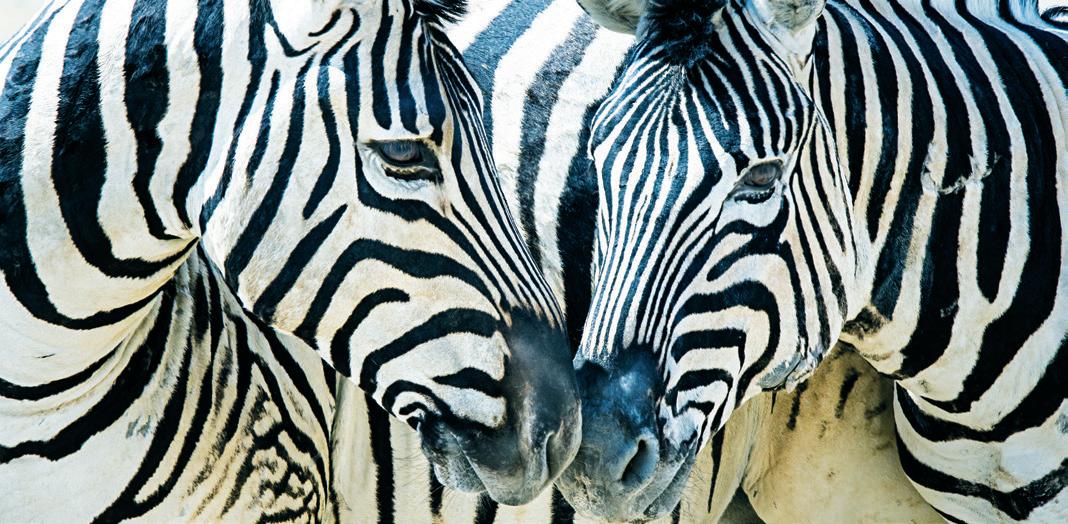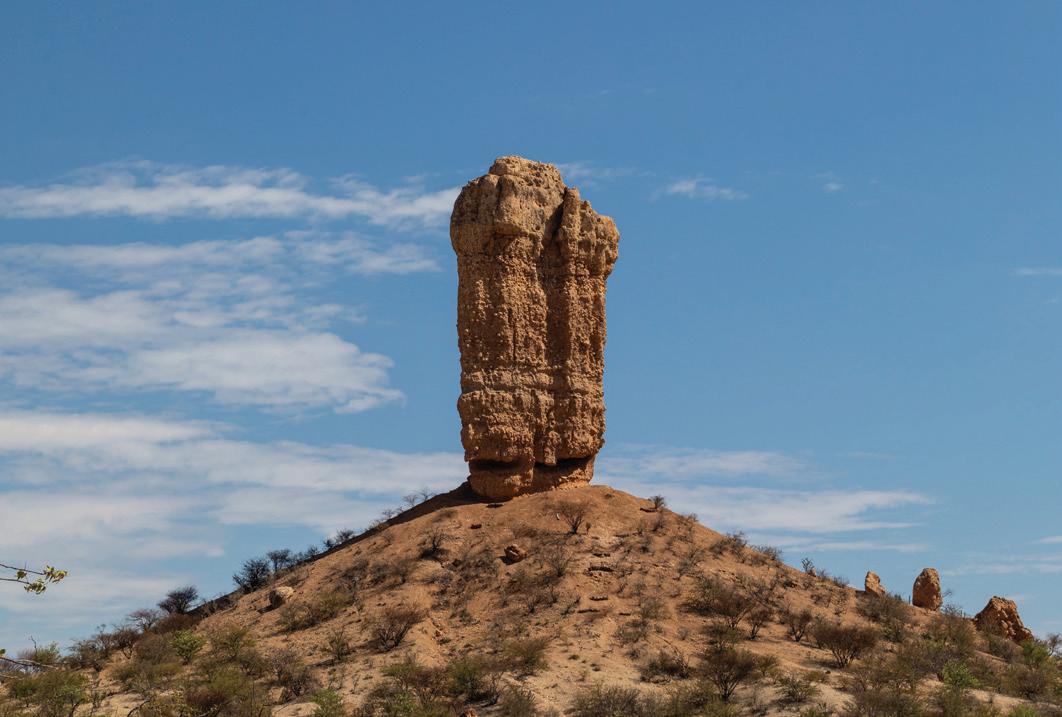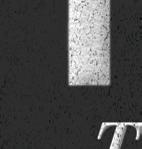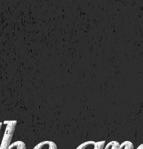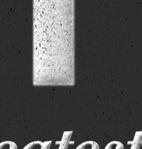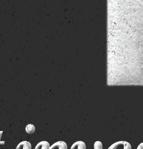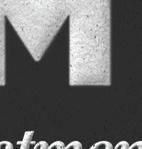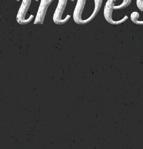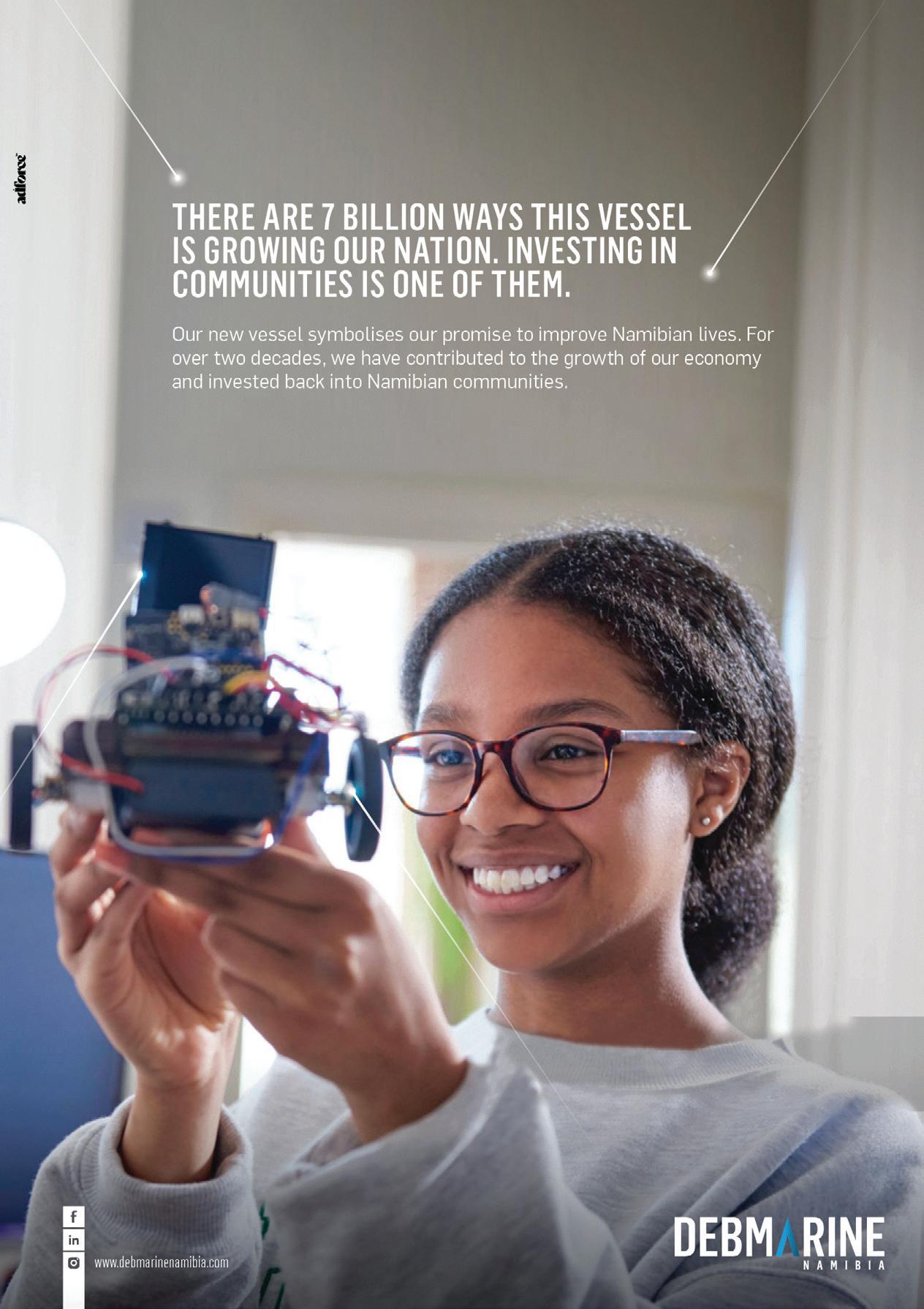



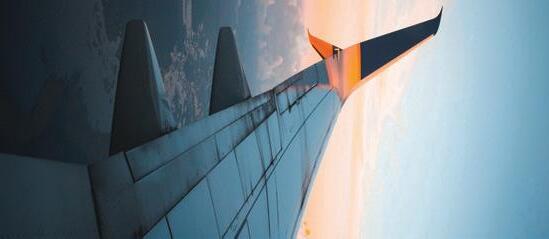




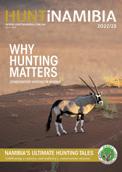





Fyodor Dostoevsky

























Fyodor Dostoevsky









www.flynamibia.com.na
Select which tickets you would like to purchase: destinations, travel dates, morning/afternoon departure. We offer multiple fare options such as: Saver, Classic or Premium
Please enter names as they appear on passport or travel documentation
LOGIN to upload passenger details from previous booking.
Baggage policy, sporting equipment, over weight luggage or to add an additional bag(s)
Cash payment at: Eros Airport, Ondangwa Airport, Oranjemund Airport
Online card transaction
Electronic Funds Transfer (EFT)
Read up on all our additional information regarding terms and conditions, and tick the selection box once completed to continue.
Fill in your payment details in our DPO paygate to make final payment.
You can also purchase from:
Windhoek Eros Airport Office
Ondangwa airport office
Rundu airport office
Katima Mulilo airport office
Hosea Kutako airport office
PayToday app Buddy SuperApp

All major travel agents
Online check-in opens 24 hours before departure of the flight on Fly Namibia
Check-in opens 1h 30min before domestic flight and 2 hours before international flight.
Check-in CLOSES 30 min prior to domestic flight and 50 min prior to international flight.
Items NOT allowed in hand luggage:
Lotions and aerosols above 100ml, flammable aerosol, sharp objects, i.e. nail files, nail scissors, Leatherman, matches.
MAX 20kg
Per person


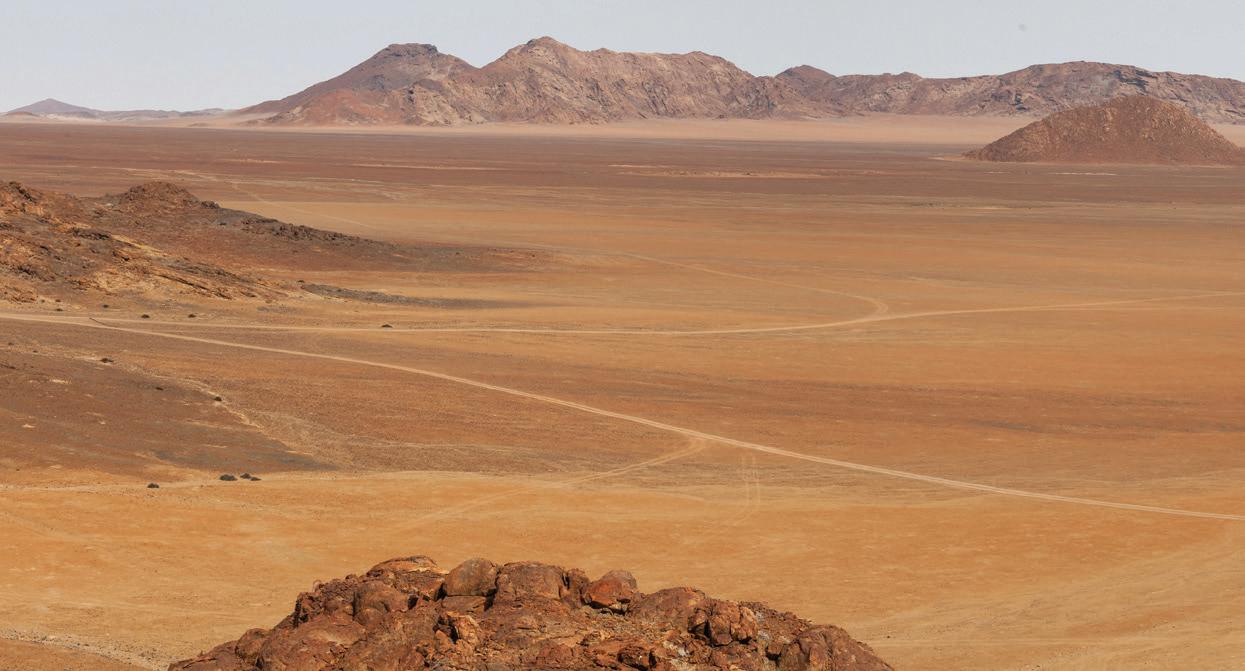

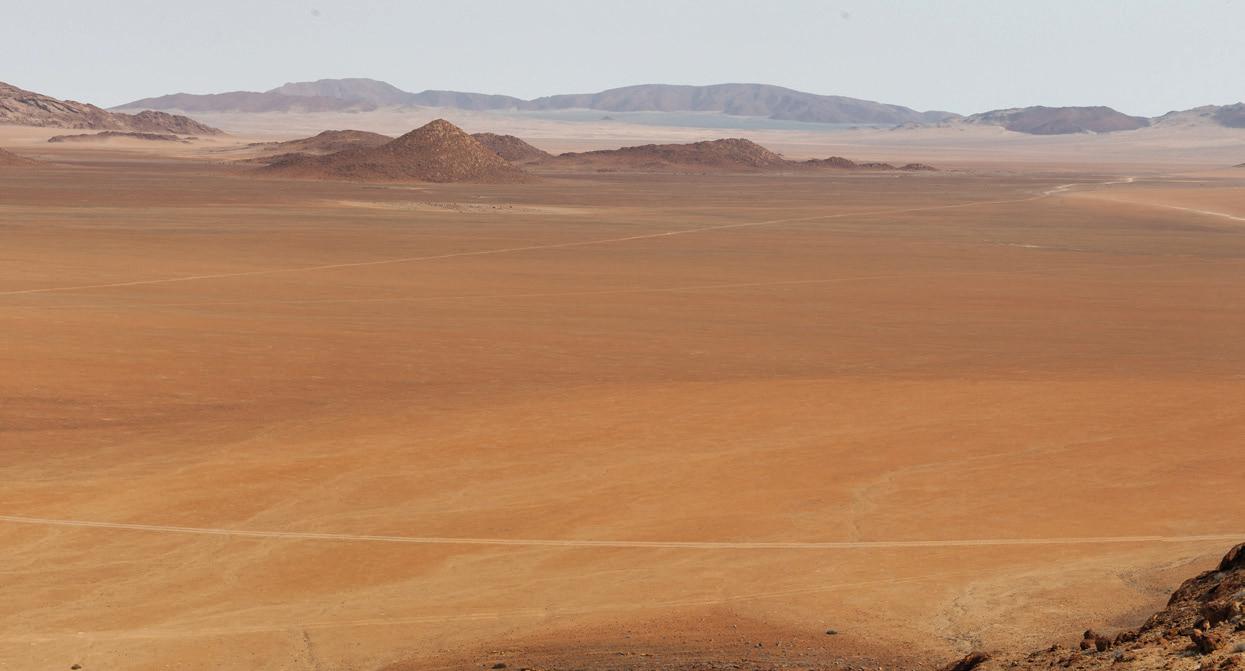
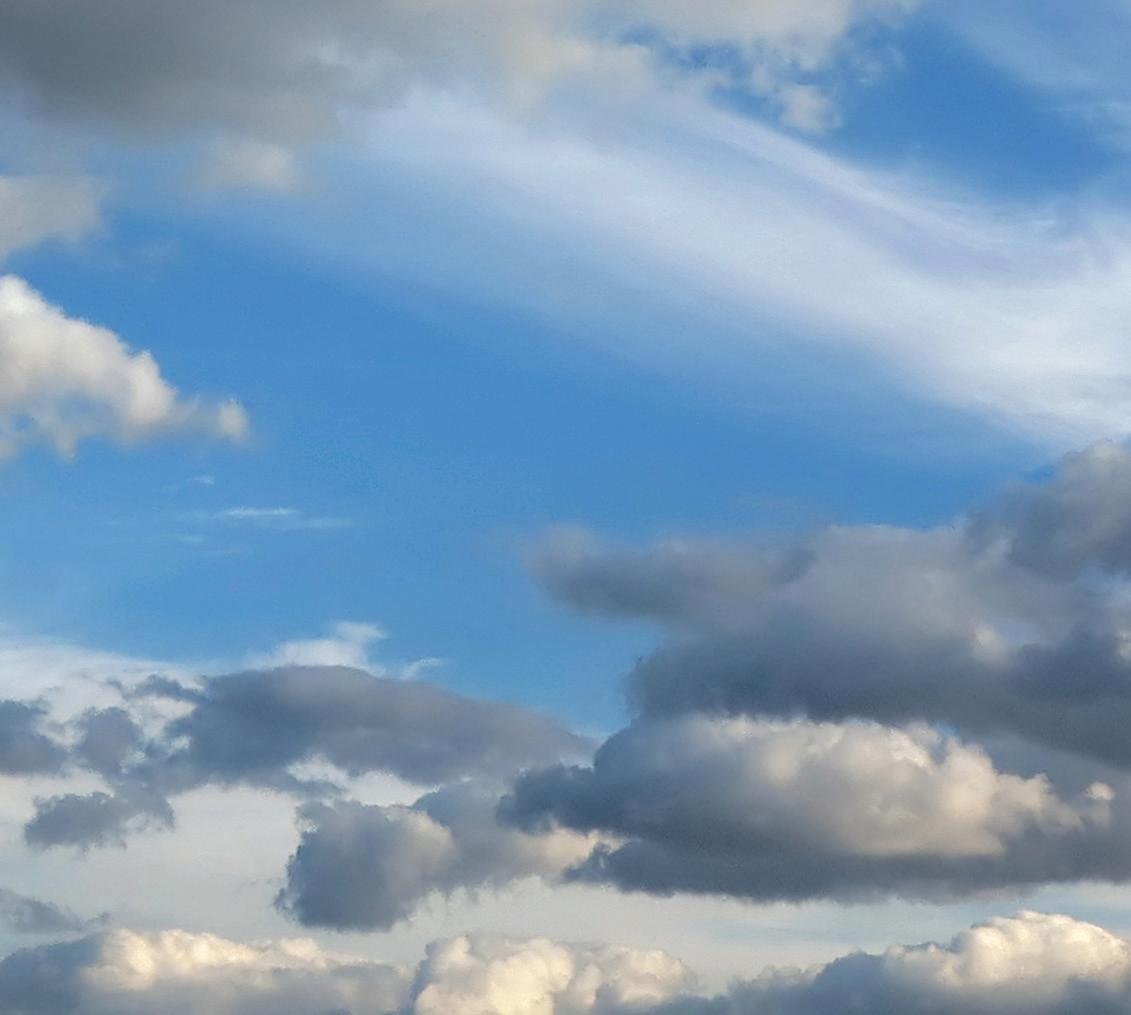

On 2 August 2023, we were honoured to host the inaugural flight and official launch of FlyNamibia’s new route from Eros Airport Windhoek to Lüderitz, Namibia’s southern gem.
Lüderitz is a unique town with a fascinating history. The first European to set foot on land was back in 1487 when Bartholomeus Dias landed there and named the town Angra Pequena, which means “Small Harbour” in Portuguese. He can rightfully claim to have opened the first formal transport route to Lüderitz by sailing into the small harbour.
The town was officially established in 1883 when Angra Pequena and some surrounding land was purchased from the local Nama Chief Joseph Fredericks II of Bethanie. It was established as a small trading post where imported goods could be taken onshore safely from merchant ships.
During the construction of the railway line, which started in 1908, the first diamonds were discovered in 1909, which suddenly led to a surge in prosperity for the town. Although roads for ox wagons and horse carts had by then been established, the opening of the railway line can justifiably be reckoned as the second official transport avenue between Lüderitz and the rest of Namibia.
It was not until the 1970’s that the first scheduled air service was introduced by Suidwes Lugdiens, linking Walvis Bay and Lüderitz to Cape Town with a small 8 seater Cessna 402 B. Suidwes Lugdiens eventually became Air Namibia and Lüderitz was served by a Beechcraft 1900 until the airline ceased operations, whereafter Lüderitz was left without any scheduled air service.
It is common knowledge that Lüderitz poses many challenges and a hostile environment to any mode of transport. Both rail and road transport suffer from sandstorms which frequently cause the rail tracks and roads to be blocked by moving sand dunes. These same challenges face any air operation into Lüderitz and from a scheduled airline perspective, there are
many more. Lüderitz remains a small market and to serve it on a viable and sustainable basis with scheduled flights is extremely challenging.
FlyNamibia is committed to invest in the economic development and prosperity of our country and has as such been investigating the introduction of scheduled flights to Lüderitz for quite some time.
We are therefore extremely grateful to have a partner such as TotalEnergies who have made the re-introduction of scheduled air travel to Lüderitz possible. Not only have they committed sufficient support for the flight itself, they have made it possible for FlyNamibia to offer the service at a significant discount to the general public. They even insisted on the reduced airfare in order to support the Lüderitz community. I can categorically state that without the support of TotalEnergies, this service would not have been possible and for that I wish to extend my sincerest appreciation to Mr Laurent Roche, the Country Chair of TotalEnergies Namibia. TotalEnergies has committed to support this service at great expense, as a service to the community of Lüderitz, but primarily to accommodate their crews that must be flown by helicopter from Lüderitz to the rigs offshore and back. Consequently, flight delays on this service may be expected with helicopter flights being delayed occasionally. For that we apologise to our passengers but trust that everyone will see the greater picture and will realise that the benefit of having scheduled flights at a subsidised fare far outweighs the possible inconvenience that may be experienced on occasion.
I wish to invite the community to make use of our services between Lüderitz and Windhoek, and beyond. FlyNamibia is expanding aggressively and is committed to play its role as a proudly Namibian privately owned airline to develop the aviation industry, create employment and training for young Namibians and to provide the connectivity our business and tourism sectors need to see our country flourish.
We appreciate your support and hope you have a wonderful flight with us.
We're also thrilled to share the latest chapter in FlyNamibia's journey, one that has unfolded with remarkable success over the past weeks. As part of our partnership with Airlink, the premier South African airline, we've soared to new heights. As an Airlink franchisee, FlyNamibia’s flight inventory is now available on the Global Distribution System (GDS), which proudly showcases our flights and services to global travel agents, expanding our reach across the world. Simultaneously, we have launched our new website with improved user experience. Our new booking platform is linked to Airlink and the GDS, so users can expect to see Airlink co-branding after venturing beyond the ‘search flights’ button. Your flights on our route system will still be operated by FlyNamibia, but this partnership allows us to offer our customers more options and allows our airline to tap into Airlink’s vast southern African network of route options.

This strategic collaboration, initiated after Airlink's investment last September, proved a game-changer. Our flights have gained unprecedented visibility, fueling demand for travel to and from Namibia. Maintaining our unique identity, we aim to continually thrive as an essential part of Namibia's air transport vision. This journey, driven by innovation and guided by our commitment, reiterates that the sky is not the limit - it's just the beginning.
We are also incredibly excited to announce the launch of a much-anticipated new route between Walvis Bay and Cape Town. This new offering will commence from the end of October and will be available for booking as from the start of September.
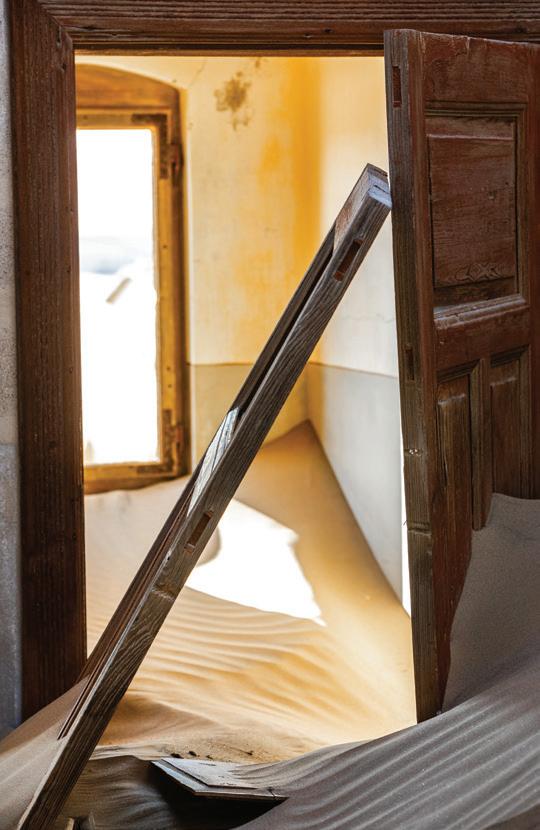

With gratitude to our passengers, partners, and the spirit of unity, we eagerly anticipate the future. Thank you for joining us on this extraordinary voyage.
Safe travels!
Andre Compion, MD of FlyNamibia
We love their stellar conferencing facilities. Droombos presents a refreshing approach to corporate conferencing, understanding the power of reuniting and re-energising groups with indoor and outdoor spaces, breakaway rooms, state-of-the-art audiovisual equipment, and unique teambuilding activities. From custom menus and buffet catering to stunning accommodation for stayovers, Droombos is sure to take your conferences and events to the next level. Embrace a more exciting way to connect, share knowledge and inspire growth with colleagues, employees, partners and friends.
E+264 81 872 2613 / +264 83 288 8352 / + 264 61 250 238 reservations@droombos.com.na or events@droombos.com.na www.droombos.com.na


We love the facial serum from their PURE skincare range. Often referred to as liquid gold by our clients, this naturally fragranced oil formula is great as a nighttime moisturiser, and the perfect everyday serum for drier skin types. Rosehip and pomegranate marry to boost collagen and hydrate skin, and applied with a gentle yet firm upward-massage, the PURE facial serum leaves you feeling dewy and uplifted. Paired with the PURE facial cleanser, toner and Kigelia cream, it offers a four-step skincare regime of perfection.
Shop Emssence PURE at the health section of Maerua Superspar @ems.sence

We love their beachfront location in Henties Bay. With a 180-degree view of the Atlantic, Ietsiemeer is located on the south dune of the holiday and angling town 71 km north of Swakopmund. The main landing features floor-to-ceiling windows that open onto an expansive deck, and even upon entering the front door, the ocean is on your doorstep. Beach picnics and icy dips in the sea are literally a hop, skip and jump away. While inside, immersed in a cosy sofa, or around a fire in the courtyard, you truly get to take in the sights and sounds of a prime beachfront location.
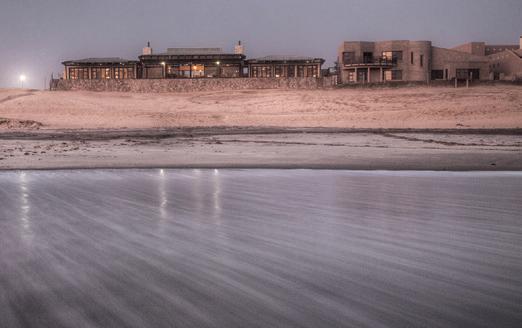
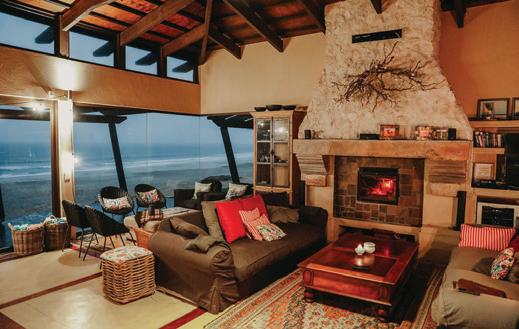
For bookings contact mariannel@scsi.com.na
www.ietsiemeer.com
@ietsiemeer
We love their digital nomad workspaces. At The Village Garden, digital nomads can enjoy a seamless blend of great coffee, cosy ambiance and super-fast Wi-Fi. Whether you choose to set up your office for the day overlooking the tranquil courtyard, or sunken into the sofa inside, The Village Garden offers power plugs to keep your workflow going, good vibes and a delicious lunch to refuel. It is the perfect recipe for getting things done while embracing the nomadic lifestyle!

www.villagewhk.com/the-village-garden @village_garden_whk
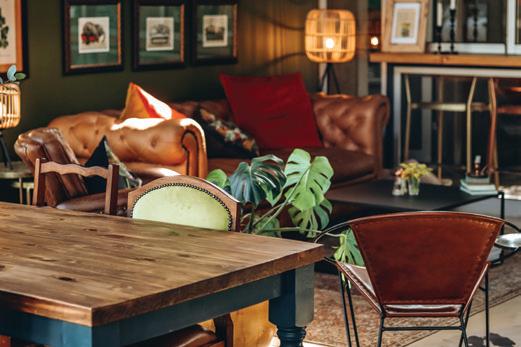
Monday | 07:30 - 15:00
Tuesday - Friday | 07:30 - 17:00
Saturday & Sunday | 09:00 - 15:00



1 kg whole kernel corn, frozen or tins
1 jalapeno chilli, chopped
125 ml black olives, drained and sliced
1 onion, chopped
1 green pepper, chopped
1 red or yellow pepper, chopped
5 ml ground cumin

50 ml white wine vinegar or lime juice
100 ml olive oil
2 cloves of garlic, crushed
60 ml coriander leaves, freshly chopped
30 ml mint leaves, freshly chopped
5 ml salt
Freshly ground black pepper
• Mix all ingredients. Keep cold until needed.
Discover more of Antoinette's delicious recipes in Life on a Table

To order your copy contact Bonn Nortjé at Venture Publications: bonn@venture.com.na





When you fill a need or a gap in a space, it makes you relevant. But if you’re doing something everybody does, you’ll die out quickly because you are not serving any need in the market.Miss Namibia 2023, Jameela Uiras Leena Shipwata, dressed in Zuriel
When he first popped up on our radars as a young fashion model making a name for himself in South Africa while pursuing a finance degree, it seemed that Luis Munana was already doing it big.
He took on big runway shows for international events, including Mercedes-Benz Fashion Week in Cape Town, Johannesburg, Nigeria and London.
Today, Luis has surpassed his vision of where he thought he would end up, building an empire that boasts some of the most significant Namibian fashion and entertainment brands.
He is the proud founder and creative director of Windhoek Fashion Week and Zuriel clothing brand, co-founder of RaZul luxury MCC, and founder of the Waka Waka Moo children’s TV and awards show – all firsts for Namibia.
“The idea was to become a supermodel, to retire as a model and not pursue other avenues in fashion. I never saw myself designing. I never saw myself running events in the fashion space. I always thought I’d be a supermodel – that was the ambition,” Luis says.
When he finally realised his destiny, Luis worked relentlessly with every new opportunity that came his way. In 2014, he graced our TV screens as Namibia’s latest Big Brother Africa housemate, which helped him establish a continent-wide fanbase.
“With Big Brother Africa being the most watched African show at the time, it meant that all of Africa was watching the show together. So it opened doors for me and allowed me to enter spaces I wouldn’t normally have entered – even though I didn’t win. That show was important for creatives across the continent,” he says.
With his star continuing to rise after his BBA stint, Luis came back to Namibia to establish Windhoek Fashion Week, an event that has become the most anticipated local fashion event of the year.
The work did not stop there. Luis built a strong portfolio of TV work after serving as the Yo! Music Video Countdown host. He co-founded and presented Voigush Africa, and hosted the MTV Base All Africa Awards, Metro FM Awards, the Namibian Annual Music Awards and Namibia’s Got Talent. He also hosted the City of Windhoek’s annual New Year’s Bash for three consecutive years.
With all the years of hard work and perseverance, Luis’ impact spread across the continent. By 2019, he became the first
Namibian creative listed on Forbes Africa 30 under 30. He later became one of five Africans to be recognised by Forbes Japan. Before that, in 2015, Munana was recognised by the Namibian Business Hall of Fame as an emerging entrepreneur.
This year, Luis’ appearance on another continental reality TV show, Young Famous & African, propelled him to even greater heights. In fact, with the show premiering on Netflix, it changed his status from an African star to one whose face is now recognised globally.
While Luis continues to push the boundaries of what one can achieve as a creative entrepreneur, he notes that it is important to not overdo things.
“One of the biggest lessons I’ve learned along the journey is to pace myself. I’m the type of person who likes to do everything because of that drive and determination that I can do it. But I’ve learned that I should pace myself to avoid burnout.”
As a perfectionist, he also learned to accept mistakes as part of the journey. He plans to keep the momentum and identify new opportunities in areas unexplored. “When you fill a need or a gap in a space, it makes you relevant. But if you’re doing something everybody does, you’ll die out quickly because you are not serving any need in the market.”
“You’d notice that most of my projects are firsts of their kind in the country, as opposed to re-inventing the wheel or doing what others are already doing, I try to focus on what we don’t have in Namibia, especially if it has been tried and tested in other countries,” he explains.
Luis aims to transcend conventional boundaries in the creative sector. His clothing brand, Zuriel, embodies this ethos, and he promises an upcoming collection centred around the theme of #GoldenBoy. “This year, I want to pay homage to my bling era. I have become accustomed to luxury and nice, beautiful, shiny things, so I want to pay tribute to this.”
Anticipation mounts for the latest Zuriel showcase as the MTC Windhoek Fashion Week approaches this November. Expect a dazzling display of creativity, as has become the mark of Zuriel’s show-stopping exhibitions during fashion week. Giving a small tease of what to expect, Luis promises a collection in opulent black, gold and white aesthetics.
Rukee Kaakunga is a Windhoek-based communications specialist, blogger and freelance fashion writer. Contact her via email: rukeekaakunga@gmail.com and follow her on Twitter @rukeeveni and Instagram @rukeekaakunga
10 minutes with local taste makers
My music is a testament to resilience and vulnerability, a mirror of life's moments that have shaped me. In each note, I find liberation, and in every lyric, a chance to touch souls across borders.


In the realm of music, where melodies echo emotions and lyrics become stories, Diolini has carved her own path, blending house, soul and neo-soul into a tapestry of enchanting sounds. Her journey into the music world began with a childhood fascination, nurtured by RnB, soul and house music that enveloped her surroundings. “Music and the creative world of arts has been a huge fascination for me since I was really young,” she reveals, reminiscing about how her taste for music grew through movies and radio hits.
Born from introspection and a desire to connect, Diolini’s artistic style was influenced by her upbringing. Growing up in a bustling household, she found her personal haven within music. “I was super shy to speak, but creative expression came more easily,” she says, explaining how her shy nature blossomed into a quiet strength through her music. “I’ve always been super introspective, and as I grew older, I realised that I didn’t need to go outside of myself to connect with people, but rather that I could draw them in with my quiet nature,” says the introverted songstress.
Life experiences have woven deep emotions into Diolini’s compositions. Her Sundays spent with an older cousin introduced her to RnB and fuelled her singing dreams. Soon, Diolini became obsessed with RnB and, encouraged by her cousin, started to believe in her singing ability. The tragic loss of her brother became a turning point, propelling her to embrace the present and conquer her fears. “Losing him clarified my purpose,” she shares, revealing how it instilled in her a sense of urgency to live fully.
With her debut album, Butterfly Echo, Diolini bares her soul through melodies. The album, produced by her longtime friend Kid Wasabi, encapsulates her journey and emotions during its creation. It is a reflection of vulnerability and authenticity that she hopes will touch listeners positively and transcend

geographical boundaries. Diolini’s breakout EP titled Relics of the Sun, which is available on all music streaming platforms, features four powerhouse songs that set the bar for her highly anticipated album release on 18 August this year.
Looking beyond personal success, Diolini envisions her music as a catalyst for change in the Namibian music landscape. “Freedom, joy and love” is how she summarises the essence she aims to bring. With the desire to inspire fellow artists, she encourages them to break free from conventions, reinforcing that being unique will always be a superpower.
For the future of Namibian music, Diolini aspires to see artists personifying their dreams, living the lives that they deserve from expressing their innate creative gifts. Her vision encompasses artists who validate themselves, investing in their skills and contributing to a vibrant creative industry. As for her own journey, she sees herself working more intently than ever with music, fuelled by a passion to travel, collaborating with aspirational peers and sharing her music on grand stages.
Beyond the studio, Diolini finds solace in being a homebody. From helping her mother in the garden to leisurely walks with her boyfriend, her life resonates with simplicity and genuine connections. She keeps her social circle close, cherishing moments spent with loved ones.
Diolini’s music echoes her journey, a harmony of life experiences, divine purpose and chasing dreams. With every note, she weaves emotions into her melodies, painting a musical canvas that resonates with the hearts of her listeners.
Diolini’s message remains clear: “We are free to create the art that makes us feel good! Those that mind don’t matter, and those that matter don’t mind.”
Charene Labuschagne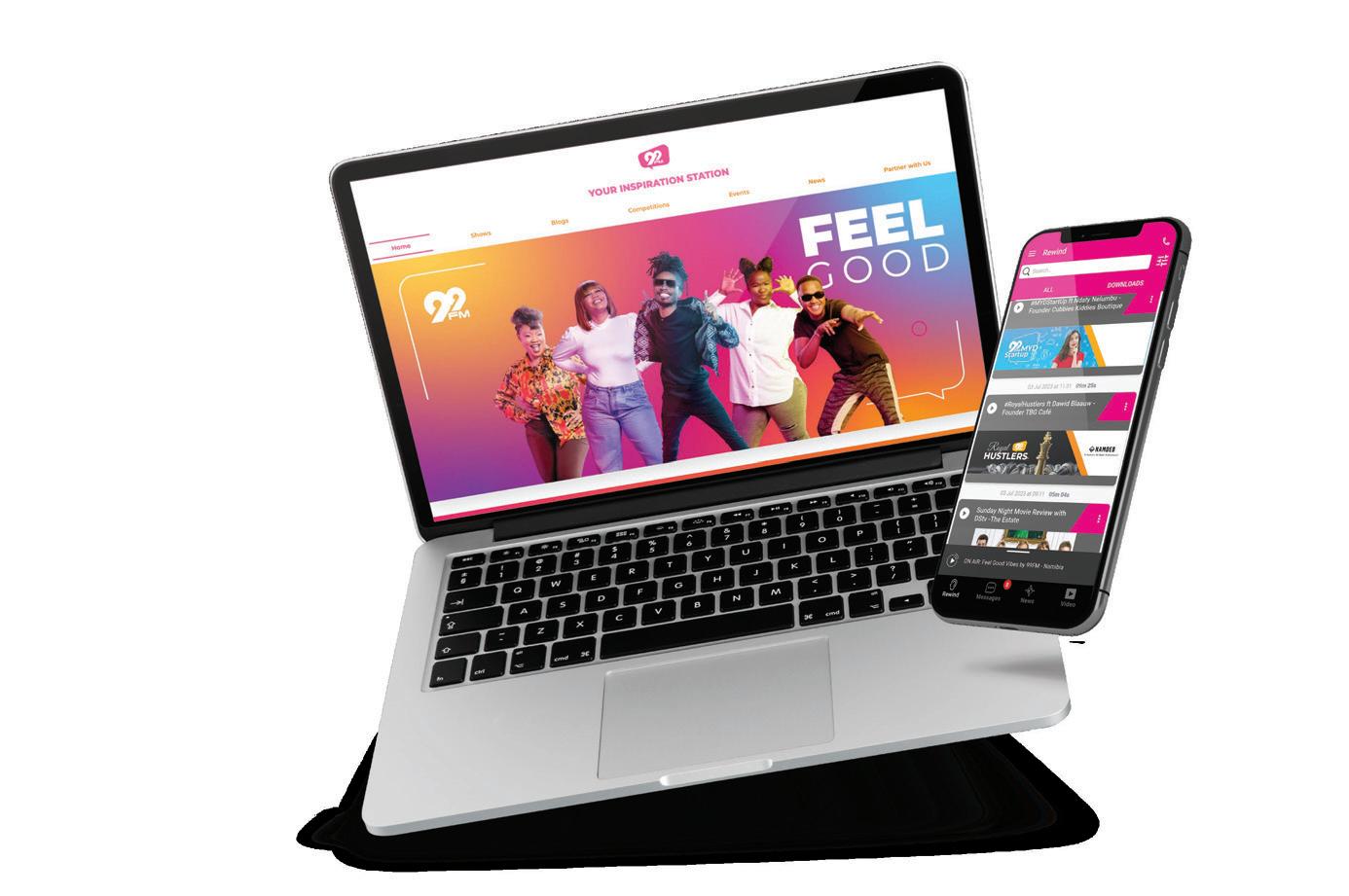


Never one to shy away from challenges and problems, Stephanie de Klerk has gone from competing as a gymnast to falling in love with law and public speaking, to embracing her role as the business development consultant at Sanlam Investments. This role, which did not exist five years ago, gives her the opportunity to live her purpose: “To transfer knowledge on investments that can generate wealth and inspire financial confidence in all Namibians.”

She was born to a single mother and a tightly knit extended family with her grandparents and cousins all in the same house in Tamariskia, Swakopmund. The youngest of four cousins, Stephanie was spoiled but also forced to toughen up if she wanted to play with her older cousins. “They would ‘accidentally’ hurt me,” she told 99FM. Stephanie confesses that she was “painfully shy” as a child, adding, “I couldn’t be a handful if I tried.”
To overcome her shyness, Stephanie’s mother got her into competitive sports from a young age. She competed in rhythmic gymnastics in primary school, which taught her about the correlation between hard work and reward. “If I didn’t practise hard, I wouldn’t get a medal.” She then applied this principle to academics, debating, sports and every other challenge along the way, making her highly driven and focused.
Jan Möhr also instilled strict discipline, academic vigour, consistency, leadership and integrity.
In high school, Stephanie met her mother’s friend, Norman Tjombe, at the Legal Assistance Centre. “I was sold on becoming a lawyer right there and then,” she says. Her grandparents helped her to go to law school and follow her dream.
Sticking with a law degree is a long and studious commitment. To keep her focussed, Stephanie would seek out the exceptions – instances when the law does not apply in the same way. These anomalies would excite Stephanie and keep her attention while studying. The law is there to govern relations because, in her words, “Human beings are at their very nature chaotic.” So, she would read the cases to understand the human element in how the law is applied.
Stephanie is motivated on a daily basis with the task of “learning myself”. If perfection is a farce, then all we can do is to be better than before: “Be better, do better, love better.” Stephanie is intent on passing on knowledge and staying teachable. She also encourages Namibians to be kind. “Choose kindness – to yourself and others.”
Stephanie grew up in church watching with awe how the pastor would hold the attention of the congregation. He would speak convincingly, and people would listen intently. He was loved and respected. She knew immediately that she also wanted to talk and have something valuable to say. “I have wanted to speak to many people and be respected for as long as I can remember.”
Her mother always valued education and insisted on the best schools. She was able to attend Jan Möhr Secondary School, where she learnt to ask questions. The school encouraged her curiosity and hunger for knowledge.
As a final word of advice, she warns that if you do not fail from time to time, there is no lesson to learn and you must be worried. “It might be time to get out of that sandpit,” she says. In a world of instant gratification, choose the road that is filled with lessons and self-improvement. Stephanie concludes, “Not everything needs a fast and quick ‘na enjoyment’ factor. Learn to learn, unlearn and relearn as much as possible.”
Proudly Sponsored by

Be curious, be kind, be teachable

Hyphen Hydrogen Energy (Hyphen) has entered into a partnership agreement with ILF Consulting Engineers (ILF), a global engineering and consulting firm, to facilitate the successful execution of its US 10 billion green hydrogen project.
Marco Raffinetti, CEO of Hyphen Hydrogen Energy, announced that ILF will provide project management services, technical expertise, procurement, and contract advice for Hyphen's project in Namibia.
The international consultancy firm will also offer implementation expertise to support Hyphen's socioeconomic development objectives.
"Boasting strengths in large-scale energy and pipeline projects, ILF has extensive global experience in supporting hydrogen initiatives. They have managed Canada's inaugural green hydrogen project, engineered a hydrogen pipeline system in Finland, and designed a hydrogen plant in Austria," Raffinetti said.
He emphasised that the collaboration with ILF is a significant step toward positioning Namibia as a leader in the green hydrogen sector.
"Leveraging ILF's worldwide hydrogen project experience will be invaluable in meeting project timelines and Namibia’s developmental goals. This partnership, combined with our engagement with potential consortium partners, highlights massive interest in Namibia as a destination for investments in cutting-edge, large-scale green hydrogen projects. We eagerly anticipate our close collaboration with ILF in delivering this transformative project,” the Hyphen CEO said.
Michel Kneller, Director of Hydrogen at ILF, expressed excitement about the partnership with Hyphen and its role in delivering one of the largest global green hydrogen projects.
He highlighted ILF's contribution to Namibia's energy decarbonisation and hydrogen export to international markets.
"We take pride in participating in this significant lighthouse project. Through our engineering and project management consultancy (PMC) services for this unique venture, we contribute to the energy transition. Hydrogen plays a pivotal
role in reshaping our energy landscape and is a key to a sustainable future," Kneller said.
Hyphen aims to achieve an annual production capacity of one million tonnes of green ammonia by 2027, with plans to increase this to two million tonnes by 2029, thereby reducing annual CO2 emissions by 5-6 million tonnes.
At full scale, Hyphen’s project could produce 350,000 tonnes of green hydrogen annually.
The Tsau //Khaeb National Park project will serve as a blueprint for future global green hydrogen initiatives.
The project is estimated to create up to 15,000 new jobs during the construction phase and 3,000 permanent jobs during operation, with a goal of filling around 90% of these positions with Namibians.
Hyphen aims for 30% local procurement of goods, services, and materials throughout both construction and operational phases.
ILF is an internationally operating, independent engineering and consulting company with over 45 offices worldwide on five continents, employing more than 2,600 professionals.
Hyphen is a joint venture between Nicholas Holdings Limited and ENERTRAG, with the Namibian government set to hold a 24% equity stake in the project.
One of the first industrial production of iron with net-zero emissions, based on HyIron technology, is set to be established in Namibia with an initial investment of N$600 million.
The Oshivela project, scheduled to commence in late 2024, is being initiated by HyIron with support from the German Federal Ministry of Economics and Climate Protection. The project aims to achieve an annual output of 15,000 tonnes of Direct Reduced Iron (DRI) in its initial phase, generating approximately 60 employment opportunities.
The ground-breaking ceremony for the project, facilitated by the Namibia Investment Promotion and Development Board (NIPDB), is scheduled for November 6th, 2023, in
Arandis. Renewable energy will replace fossil fuels in the conventional production process, powered by a solar and wind energy plant.
"In the initial phase, a 20 MW solar photovoltaic installation will provide carbon-free electricity to the plant. As production scales up, an additional 18 MW of wind energy and 140 MW of solar energy will be integrated. This power plant will primarily supply energy for water electrolysis to produce hydrogen, the reduction agent. The hydrogen will then be transported to the furnace, where it will react with the iron ore's oxygen at ambient pressure, ultimately forming water. This water will be reused within the process."
When operational, the Oshivela project is anticipated to become one of the largest primary green iron production sites globally. At this stage, it is projected to reduce annual CO₂ emissions by 27,000 metric tons, equivalent to 50% of Namibia's power industry emissions, as per the developers' estimates.
"The Oshivela project, boasting an annual production potential of 1 million tonnes of iron, is forecasted to mitigate 1.8 million tonnes of CO₂e/year. If applied to the necessary additional production capacities of 300 million tonnes by 2030, this could result in a yearly reduction of 540 million tonnes of CO₂e, making a substantial contribution to the fight against climate change."
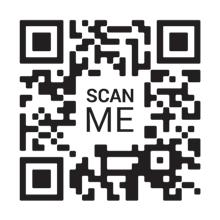
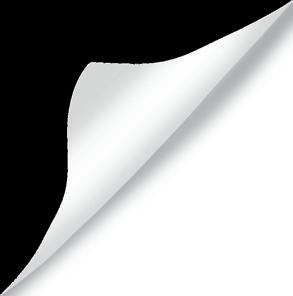
According to the developers, the project is poised to address the growing global demand for iron, which is projected to rise from the current 1.9 billion tonnes annually to 2.2 billion tonnes by 2030, necessitating an increase in production capacities by 50 million tonnes each year.
The Roads Authority says it has completed the first phase of the Windhoek-Rehoboth Road and the Windhoek-Hosea Kutako Road, at a cost of N$ 300 million, over a duration of two years.
According to Roads Authority’s CEO Conrad Lutombi, the development aims to improve connectivity between Windhoek, the Hosea Kutako International Airport (HKIA) road, and the southern-link to the Police Roadblock on the Windhoek-Rehoboth Road.
"The newly opened route is set to bring relief from congestion as this link allows traffic to traverse freely, bypassing the police
checkpoint without passing windows. This diverts from our current route and alleviates traffic congestion,” said Lutombi.
He highlighted the complexities involved in acquiring land for such infrastructure projects. "We had to gauge the landowners. And we are happy that the government finalised the process," he said while addressing the challenges faced during the project.
The expansion of the road is expected to alleviate traffic congestion and provide easier access to key locations, including the military base and residential areas.
Lutombi noted that the Roads Authority is set to complete phase 2B next year. "Phase 2B, around 21km long, concludes by November 2024. Our aim is to extend the road to align with the Rehoboth freeway and phase 2B which includes completing the entire road up to the airport,” he said.
The Roads Authority expects to complete its Freeway Project by May 2024 while the Windhoek-Okahandja Road, which has been under construction since January 2016, is expected to be operational by the end of August 2023.
This includes the current road Windhoek-Rehoboth freeway and other phases of the project include OmuthiyaOndangwa freeway, and Walvis Bay-Swakopmund freeway and Ondangwa-Oshakati freeway.
Earlier this year the Roads Authority launched a N$ 15 billion five-year Integrated Strategic Business Plan (ISBP), which seeks to expand the national road network as well as upgrade gravel roads to bitumen standards.
The authority plans to construct and upgrade 700km to bitumen standard, 215km of gravel road, rehabilitate 715km, and re-gravel 2,800km, as well as rejuvenate 635 km to low seal bitumen standard.

The ISBP funds will be sourced from the Road Fund Administration (RFA) which will provide N$ 10.27 billion, and an additional N$ 1.22 billion through loans and grants, whereas the government will provide funding of N$2.78 billion over the five-year duration ending in 2026/27.
According to the RFA, Namibia’s road network is valued at N$ 101 billion, of which about 83% is unpaved.

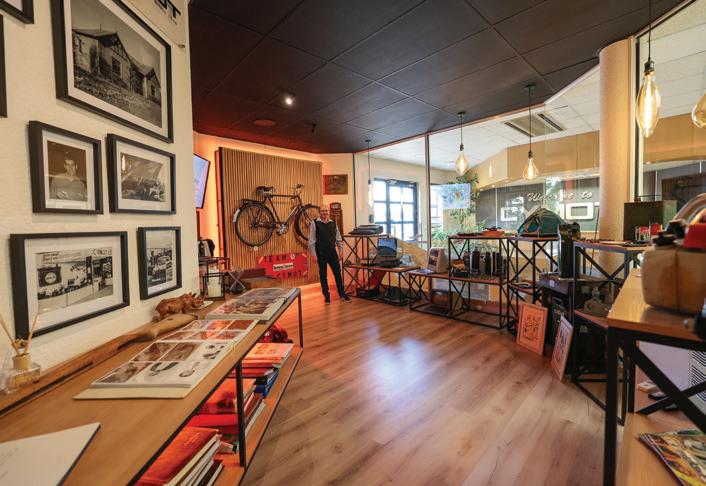
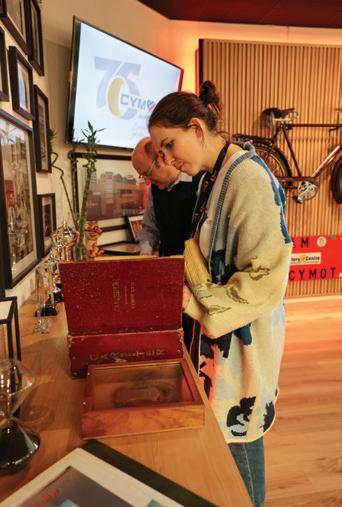



Ajourney through time, an emblem of innovation, a chronicler of culture; this is the essence of what CYMOT embodies and what you will find when stepping through the door to the recently unveiled CYMOT Museum. Housed in a refurbished corner of their head office in Windhoek’s northern industrial area, the CYMOT Museum celebrates 75 years of the company’s existence, and in many ways, 75 years of Namibian history itself.
From the moment you walk into the room, you're greeted by a wave of nostalgia. Filled to the brim with artefacts and photos, the space comes alive with tales of achievement and perseverance. The walls narrate the company's journey, resonating with the impact it has had on the nation.
On display is evidence of manual stock-taking systems from bygone eras, reminders of simpler times when lunchtime table tennis tournaments brought joy and camaraderie. Shelves upon shelves display classic photo albums brimming with memories. These pages of history don't just recount the story of a company, but the story of Namibian people and their relentless pursuit of excellence.
It all began with Helmut Brass in 1948, with nothing more than his family and £600 in debt, they set off for South West Africa from South Africa in a new Hudson. Through desert sands and across vast plains they voyaged to an uncertain future. From selling Autolite car batteries out of his residence to opening CYMOT's first official branch in 1950, the company's journey mirrors Namibia's growth itself. In 1958, groundbreaking innovation saw them importing and distributing Irvin Safety Belts, a testament to CYMOT's commitment to pioneering change.
As you move through the museum, you'll find evidence of this first ever car seat belt marketed in Namibia, along with a myriad of other vintage odds and ends. A 40-year old Engel
camping fridge donated by Le Roux van Schalkwyk is displayed with pride of place. The fridge is still running today. The beers cheekily stored inside are perfectly chilled upon inspection.
The faces of 75 years worth of employees and their achievements add a human touch to the corporate tale. Alongside, an iconic box iMac, juxtaposed with Mr Claus Theissen's secretary's old typewriter, evokes a sense of transition from the old to the new.
A vintage bicycle, with automated turning wheels, is mounted against a feature wall, reminding visitors of CYMOT's dedication and ingenuity in importing bicycles to Namibia. Each artefact tells a story of progress, of embracing new beginnings without losing touch with the past.
CYMOT's history is a tapestry of growth, expansion, and innovation. From Claus Theissen to Axel Theissen's 20-year service as Managing Director, leading to the current CEO, Ralph Ellinger, the baton has been passed with integrity and foresight. The new flagship branch at Hilltop Estate will stand as an example of the company's ongoing commitment to growth and innovation.
As the museum reflects on the past, it also symbolises a bright future for CYMOT. A company deeply rooted in serving its customers, impacting local communities, and consistently innovating, it remains well-positioned to carry on its success story.
The CYMOT Museum is not just a place but an experience. A vivid representation of Namibian pride, industry, and human spirit. It is a celebration of 75 years of courage, resilience, and innovation. As you walk out of the museum, you carry with you a piece of Namibian history, a sense of shared identity, and an overwhelming inspiration to look towards the future with hope and ambition. CYMOT invites those who are eager to celebrate its 75th anniversary and the shared history of Namibia to come visit their new museum at their head office.
The concept of aviation and space exploration can be traced back to classical antiquity, where dreams of soaring through the skies and beyond captivated the human psyche. Even before the advent of modern technologies, visionaries like the famous artist Leonardo da Vinci had already pondered the principles behind flight. In his 15th-century paintings, Da Vinci sketched the first drafts for a rational aircraft on which the concept of the modern-day helicopter is based. Furthermore, Greek mythology tells the story of Daedalus, an inventor, who created wings from feathers and wax to escape from captivity with his son, Icarus, and challenge the gods. While ancient humans lacked the technology to accomplish their ambitions, this did not stop them from experimenting. Their quest led to the invention of kites, hydrogen-powered hot-air balloons and eventually the successful motoroperated aeroplane of the Wright brothers.
While aviation focuses on conquering Earth’s atmosphere, space exploration aims to explore the cosmos. The journey began in 1957 with the launch of the Soviet Union’s Sputnik 1, the world’s first artificial satellite. This event marked

the beginning of the Space Age. In the following years, significant milestones were achieved, including the first human spaceflight by Yuri Gagarin in 1961 and the historic Apollo 11 mission in 1969, which saw Neil Armstrong and Buzz Aldrin become the first humans to set foot on the Moon. As technology advanced, space exploration expanded beyond the Moon, with robotic missions exploring other planets and moons in our solar system. Notable examples include the Voyager missions to the outer planets, the Mars rovers and the Cassini spacecraft’s exploration of Saturn.
One fundamental concept that sets space travel apart from aviation is escape velocity, which is the minimum speed an object needs to break free from a celestial body’s gravitational pull – in this case, the gravitational force of Earth. Unlike aeroplanes, which rely on lift and thrust to counteract gravity, spacecraft must attain tremendous speeds to escape from Earth’s gravity well. The escape velocity of Earth is approximately 40,270 km/h, or 11,186 m/s. Rocket engines operate on Newton’s third law of motion, expelling high-velocity exhaust gases to generate thrust in the opposite direction. This allows launch vehicles to achieve these enormous speeds.
Aeroplane engines require oxygen from air to burn fuel. However, spacecrafts have propulsion and manoeuvring systems that use reaction propulsion and do not need to be immersed in air to fly; they are ruggedly built and can be pressurised in the absence of air. Like an aeroplane’s jet engine, a spacecraft uses rocket boosters to provide the means of acceleration. Liquid-fuelled rocket engines burn fuel mixed with an onboard oxidiser, while solid-fuel rocket engines have the propellant and oxidiser mixed; once ignited they burn till the propellant supply is exhausted. In addition, aeroplanes must rely on the principle of aerodynamics to generate lift and overcome the forces of gravity and drag. The wing shape and angle of attack coupled with Bernoulli’s principle – which states that the pressure within a moving fluid (liquid or gas) decreases as its speed increases – allow air to flow faster over the curved upper surface, creating lower pressure and producing lift. On the other hand, spacecraft must employ orbital mechanics to navigate in space. Orbital mechanics focuses on spacecraft trajectories, including orbital manoeuvres, orbital plane changes and interplanetary transfers. The Cassini spacecraft, which was launched in 1997, used a technique called gravity assist or gravitational slingshot to gain momentum and adjust its trajectory through the gravitational pull of Venus, Earth and Jupiter. This technique is a fundamental application of orbital mechanics.

Space travel presents numerous challenges that differ significantly from aviation. Spacecrafts must endure extreme
temperature fluctuations, radiation and micrometeoroid impacts. Thermal control systems, shielding materials and robust structural designs are essential to protect the spacecraft and its occupants or payloads. Additionally, longduration space missions demand careful consideration of life support systems, nutrition and psychological well-being.
While aircraft and spacecraft differ significantly in terms of their operating environments and specific design requirements, there are similarities. Both aircraft and spacecraft are complex machines with numerous interconnected systems. These systems include power generation, fuel storage, environmental control, electrical systems and avionics. Sophisticated navigation and control systems are crucial for both aircraft and spacecraft, as they utilise onboard sensors and computerised systems to monitor and adjust their flight paths, orientation and trajectory. Whether it is a GPS for aircraft or celestial navigation for spacecraft, accurate positioning and control are essential for safe and efficient operations.
The science of flight and space exploration share a deep connection, with each discipline building upon the principles and technologies developed by the other. By understanding the similarities and differences between these two realms, we gain a greater appreciation for the challenges and achievements of both aviation and space travel.
Victoria N NakafingoFrom Da Vinci's sketches to Sputnik's launch, the intertwined evolution of flight and space exploration illuminates humanity's relentless pursuit of the skies and beyond, a testament to innovation and determination.



There's magic in the non-linearity of time passing; the past and present touching sides and bursting with joy.


Painter and printmaker Lisette Forsyth often explores the convergence of past and present, especially through her thoughtful interweaving of acrylic and fine ink illustrations with recycled scraps from historical 1840s gazettes, old books, vintage archival maps or even discarded construction plans.

“I would say it all started when I moved to Woodstock, Cape Town, where I observed people upcycling on the streets,” says Lisette. “I was prompted to do the same by salvaging a piece of wood and experimenting with the possibilities. I remember finding a 1956 wage ledger with its grim pattern of numbers and lines. At the time, South Africa was restless, rioting against the minimum wage discrepancy.” Inspired by Claude Monet’s singular The Coal Workers (the famous impressionist’s only work to feature gritty reality rather than dreamy landscapes), Lisette contemplated the small beginnings of a project that would later be titled Honest Day’s Work, which came about in 2013.
A virtuoso at skilfully repurposing interesting surfaces into unexpected canvases, Lisette notes that her ideas are “birthed through meditation and contemplation as the images and surfaces find each other”. She adds, “That’s what I call the magic. It’s quite uncanny sometimes.”
When she first arrived in Woodstock, Lisette initially did graffiti art on walls. “Based on this experience, I wanted to somehow incorporate aspects of the neighbourhood’s energy and moving, modern images into the studio. Actually, much of my art today still has its roots in street art.”
She admits that her work originally took a protest stance. “But it reaches beyond the social and political margins of conventional activism – it is also an expression of celebration and acknowledging how diverse we are,” says Lisette.
Through merging sketches of our quotidian, societal struggles with historic maps, Lisette creates dialogue with the viewer.

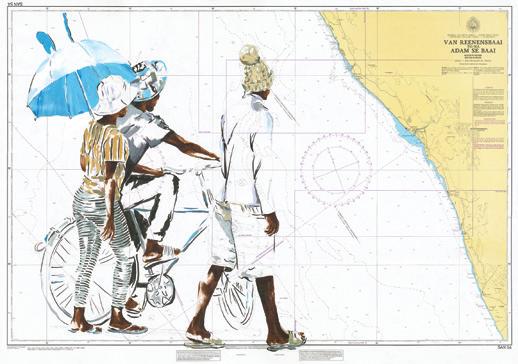
Reclaimed surfaces garner a life and contemporary manifesto of their own.
Her latest exhibition, A Thin Line, is more personal. Born in Namibia in 1968 when it was still South West Africa, Lisette found her creative trajectory, like a homing bird, traced back to a place she hardly knows. “The title carries multiple meanings. A thin line on the map indicates a dirt road. A thin line connects me to Namibia. A thin line is the smallest detail. A thin line between genius and sanity, love and hate, life and death.” The works are featured on same-sized maps that are framed in a method referred to as “float” – raised to retain the rough edge of the used map.
Returning to her country of birth has signified an early, naive handshake. “As I crossed the border into Namibia, I immediately sensed peace.” During her travels, she consciously tapped into her observations of the country, admittedly, from a starry-eyed “touristic glance”. She hopes it is the first of many explorations. “During my travels, I wanted to keep finding more relevant surfaces and use opportunities to get deeper into the ticking and underbelly of Namibia.” Lisette plans to return to Namibia for the exhibition, currently on show at The Project Room. “There is still so much to uncover on this journey. These new compositions hopefully point towards a continued unearthing of memory, enchantment and time. There’s magic in the non-linearity of time passing; the past and present touching sides and bursting with joy.”
Madeleen Olwage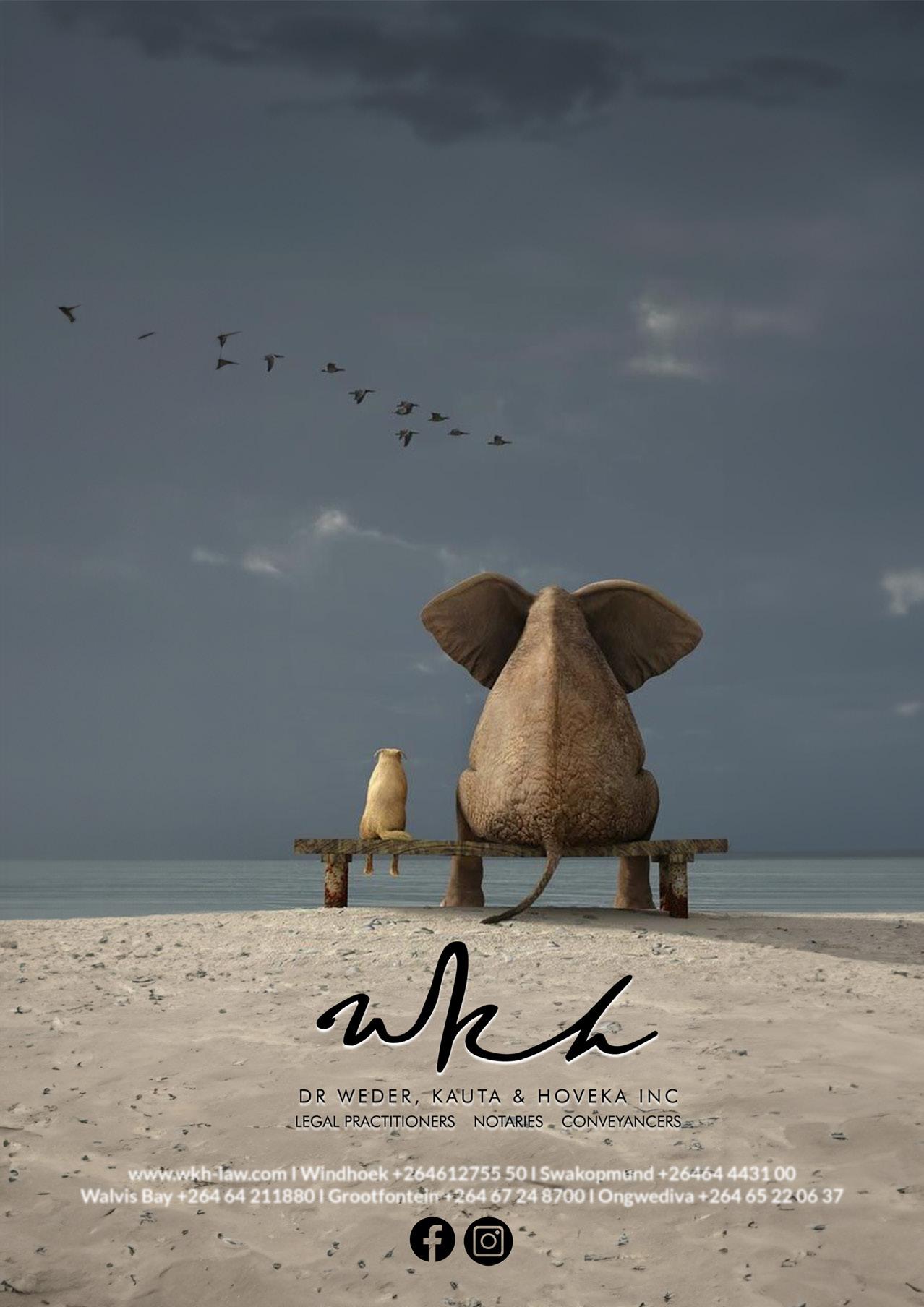

A family of 11, received a new home, with the assistance of Walvis Bay rural constituency councillor, Donatus Tegako, after living in a tent for some time
AWalvis Bay family of 11, including a disabled teenager, moved into a new home earlier this month. Walvis Bay rural constituency councillor, Donatus Tegako, allocated a house worth N$452 000 to the Amutenya family after he heard of their plight.
At the beginning of the year, their landlord sold the house they were living in and they had to make do in a makeshift structure. Their tent shelter was made of old sheets and cardboard boxes that were insufficient against the wind and cold. Life in the tent was especially hard for their 18-year-old wheelchair-bound son.
The family received an unoccupied house built under the mass housing programme in Walvis Bay. According to the disabled boy’s mother, Justina Amutenya, who is a seasonal worker at a fishing company, they have been residents of Walvis Bay for almost 26 years. Amutenya indicated that they have approached the


municipality on several occasions in search of a house but were unsuccessful.
“He (Councillor Tekago) surprised us today by sharing the good news with us. He said to my son Johnny ‘I brought you good news. You will be sleeping in your own house today’. My son was laughing although he cannot speak, I could see he was happy,” remarked Amutenya.
Her husband, John Amutenya, who had spent the previous night holding the poles of the tents to prevent them from being blown away by the strong winds, was in disbelief. “I saw the house but I am in disbelief,” he said.
Councillor Tegako said he thought of the family as strong winds raged for the past few days at the coastal town. He found the family holding onto poles of their makeshift structure fearing that it might be blown away by strong winds and approached Walvis Bay mayor Trevino Forbes to work on a way of moving them into a house.
Josia Shigwedha

Today, as we step into our own house, my son Johnny's laughter speaks what words cannot. This home is not just bricks and mortar; it's a haven of hope and happiness.



An unexpected, pleasant surprise that leaves one amazed. Or to be overturned from an upright position. The term “bowled over'' can be defined as any one of these. In BELLHAUS Atelier & Galerie’s new exhibition titled BOWLED OVER, ceramics and pottery take centre stage. The plethora of bowls are every bit as pleasantly surprising as they are overturning an outlook on the medium.
The humble ceramic bowl is re-imagined by the Potters’ Association of Namibia (PAN) for their annual themed exhibition – a synergetic collaboration with the ceramics fanatics of BELLHAUS Atelier & Galerie. Not only does the gallery present the ideal space for an exhibit of this nature, but owner and curator Andrea Behnsen fosters a personal love for the art form. When curating in unison with the PAN committee, Andrea chose to showcase a variety of techniques and influences. The result is a wondrous range of bowls in a diverse spectrum of shapes, sizes, colours and functions.
Why bowls, we ask? Because even an object as simple and self-explanatory as the bowl can exist in a million different iterations. And perhaps the most rudimentary of forms can truly highlight the technique and artistic aesthetic of the potter. PAN’s members and non-members who chose to showcase in the exhibit have done just that by showing their skill and unique style in the confines of a hollow vessel.
PAN’s vice-chairperson Jacqui Jansen van Vuuren highlights how environments shape artistic inspiration. An industrial city-living potter’s ceramic bowl might be more muted in

colour and simplistic in style. In turn, the potters of Namibia implore texture, colour and organic shape.
The pottery presented in BOWLED OVER, crafted mostly by hobbyist ceramicists residing in Namibia, came to be a clay-form manifestation of the country’s bountiful natural splendour. Be it literally as in the work of Annabelle Venter, who employs small animal figures in her work, or Martin Harris, whose bowls more subtly mirror the hues of green in the north, all the artists’ creations ended up showcasing a deep appreciation and predisposition for the natural.
Stripped back to the basics of ceramics, playing with clay can stir intense nostalgia. Many fond childhood memories involve dirt under fingernails and a kid bowled over by a mountain of mud, creating a featureless sculpture that will not stand the test of time. Playing with clay, or being a potter, awakens childlike exploration. Only, these ceramic art pieces that are fired and glazed may exist for as long as the earth still does.
While the pottery scene in Namibia strives to build a bridge between craftsmanship and art, it is, in its truest form, an artistic endeavour with practically useful results. BOWLED OVER aims to emphasise that in pottery, beautiful and practical are not mutually exclusive. A bowl can be both, and an art gallery full of bowls is just wonderful!
BOWLED OVER opens on Thursday, 9 September at 18:00 for 18:30 and runs from 9 to 23 September. BELLHAUS Atelier & Galerie is located at 18 Bell Street, Windhoek.
Charene LabuschagneSTRAND HUB AT STRAND HOTEL SWAKOPMUND – GEARED TO BOOK YOUR ADVENTURE!
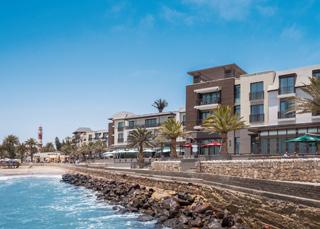
Nestled between the dunes and the Atlantic Ocean lies Swakopmund, Namibia’s largest coastal town and capital of the Erongo region. Established in 1892, Swakopmund draws global visitors year-round, offering a great variety of adventures and experiences. It has rightfully earned its reputation as Namibia’s activity centre, offering an enticing mix of culture, history, adventure and relaxation.
Part of the – more than 100-year-old - history of Swakopmund is the Strand Hotel Swakopmund, located on the iconic The Mole. A grainy black-and-white photo dated March 1913 shows a view of the first Strand Hotel. By the 1960s the single-story Strand Café had evolved into the Strand Hotel. A two-story addition provided accommodation for visitors. The hotel has been an integral part of Swakopmund’s social scene and remains a focal attraction for local and global visitors. The new hotel, as it exists today, was officially opened in 2015.
Strand Hotel Swakopmund features sea-view rooms and a variety of unique restaurants. The Welwitschia lobby lounge bar and terrace provides you with a quiet retreat, while the Ocean Cellar offers seafood specialties and wine. At the Brewer & Butcher you can enjoy the sound and sight of a micro-brewery coupled to a great restaurant experience. Longing for some home-style meals? Feel free to enter our Farmhouse Deli. And if some pampering or exercise is part of your holiday programme – the Atlantic Spa and Gym will cater to your relaxation and fitness needs.
The Strand Hub, located before the hotel entrance, serves as an adventure facilitator and curio shop, creating and boosting your memories of Swakopmund and surroundings. Strand Hub offers an array of activities, from sandboarding to camel riding. Thrill-seekers can enjoy activities like ballooning, skydiving and quad biking, while nature lovers can choose bird-watching trips, seal colony visits and desert tours.
The Strand Hub also arranges cultural township tours, museum visits and various sightseeing experiences, enhancing the overall holiday experience. Transfer arrangements, restaurant reservations and shopping advice are available, along with a curated collection of books, apparel and souvenirs.
BOOK TODAY AND LET US TAKE YOU ON AN EXTRAORDINARY COASTAL ADVENTURE.
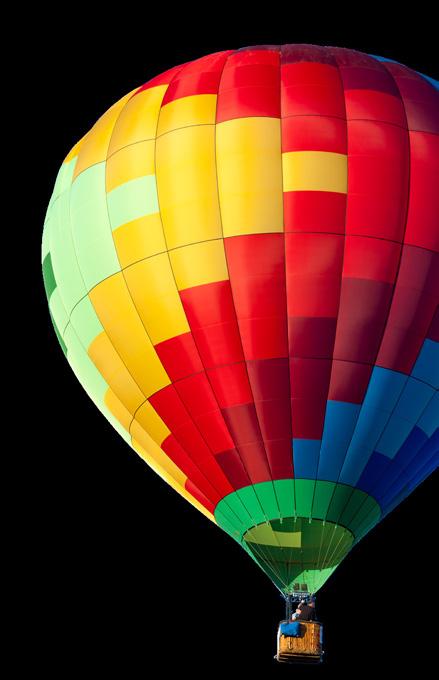
For more information, please contact us at:


T +264 64 411 4000 / +264 64 411 4811 strand.res@ol.na | www.strandhotelswakopmund.com www.ol-leisure.com


ature boasts beauty in spring, highlighting for us the possibilities of new beginnings. As the landscape is reshaped and revitalised, demonstrating the power of renewal, we are afforded the inspiration to renew our minds. Springtime reveals itself in its outward growth. We see new buds poking out of dry branches, reaching outwards towards the sun and the promise of warmer season rains while awaiting their turn to blossom.
Nature organically responds to this new season of spring, and while the land reinvigorates, this can create a subconscious inspiration to re-energise ourselves. We feel inspired and filled with optimism for new beginnings. This can give strength to our own fresh starts.
Our environment comes to life as nature awakens from its winter hibernation, and so too can we harness the power of this season and rejuvenate. To renew is simply to restore what once was; to restore the existence and refill the space.
The beauty of renewal is that it brings us in line with our life’s purpose and values, which lead us to progress in our lives. Our capacity for self-renewal (like we see in nature) hinges on our capacity for personal growth. When we overlook our own need for self-renewal, we can miss opportunities and stagnate.
For a start, we simply need to be aware of ourselves, as with awareness we are able to develop a refreshed version of ourselves. Knowing yourself is the beginning of all great personal achievements. As the Chinese philosopher Lao Tzu wrote, “He who knows others is wise; he who knows himself is enlightened.” Why this matters when talking about renewal is because everyone has a preferred way of renewal. A way that works for them to feel refreshed. Knowing ourselves helps us to identify our own sources of intrinsic motivation.
For example, are you tactile, kinaesthetic, visual or auditory? Here is how it applies to renewal:
Tactile: You need things like hugs or massages. Physical touch and lovely feeling fabric. These things help you feel renewed and refreshed.
Kinaesthetic: You need to dance or run or express your feelings with your hands. These things help you feel renewed and refreshed.
Visual: You need to look at art, spend time in nature or read a book. These things help you feel renewed and refreshed.
Auditory: You need to listen to music or attend a sound healing class. Or perhaps you need to have a good
conversation with a trusted and respected source. These things help you feel renewed and refreshed.
Sometimes we are not only one of these types but a combination of them. Knowing what feeds your soul helps you to create moments when you give yourself that which you need. This helps you feel revitalised. With this knowledge you can nurture yourself based on your type and drivers. This is using mindfulness to drive motivation and personal growth. There is a strong connection between motivation and self-renewal. This means that when we are looking after ourselves, we increase our self-esteem, which in turn makes us feel more self-efficient and this increases our motivation and ability to perform our tasks.
Here follow some of the ways in which you can renew yourself this spring to increase your self-esteem:
Understand your deepest negative thoughts by asking yourself: “How many of my days are spent harbouring negative thoughts?”
Continue by asking yourself:
“What is working in my life and what is not?”
“What can be improved?”
“What do I really want?”
The answer to these questions helps us to understand where the roadblocks are that keep us from being where we want to be. It is also important to remember that some roadblocks are external and others are internal. Often the things that hold us back are our own fears or doubts.
To renew our minds, we should not focus solely on the mind. To nurture our minds, we need to engage the body. Make time to move your physical body, as it is the small step you take today that will set you on the path to refresh your mindset.
Optimism is essential for self-renewal. We need to stand in the face of obstacles and realise that we can be more tomorrow than we were yesterday.
As we enter this new season, I invite you to remember that nature shows us that spring will always follow winter. You always have the opportunity to refresh and renew those things that are not working in your life.
Kirsty WatermeyerLet FlyNamibia help you discover many different destinations. the wonders of Namibia, connecting you with
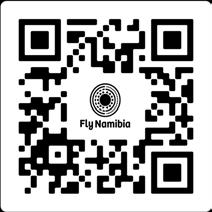
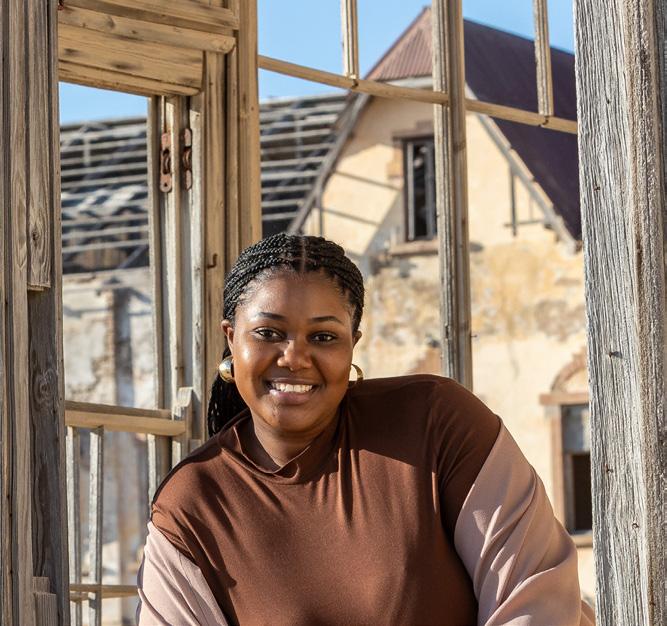
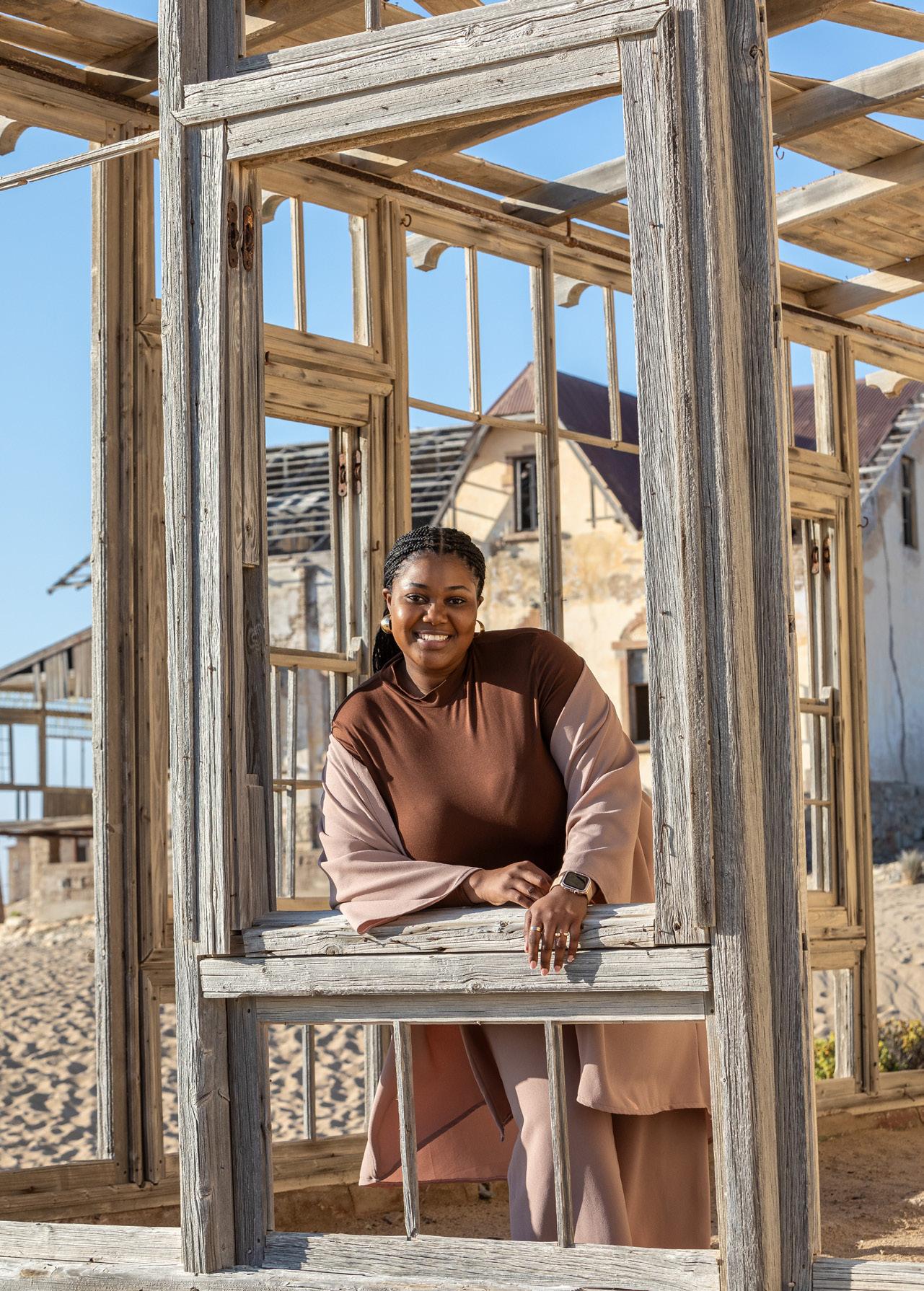 Kolmanskop
Kolmanskop
Globally, food self-sufficiency has become critical. Food self-sufficiency is defined as a country’s or community's ability to meet its own consumption needs through its own production, rather than having to buy or import. It directly affects the country's capability to fulfil the nutritional needs of its population.
Considering the globe's increasing demand for food, selfsufficiency represents a major challenge for humanity. Demand is expected to further intensify in the coming years. Coupled with rapid population growth, it gives rise to serious concern. According to predictions, worldwide crop production will need to at least double by 2050 if it is to meet projected food demand. And it is not only population growth driving this projected shortfall: the world is witnessing a shift towards richer diets all over the planet.
According to a report by the United Nations, an estimated 821 million people are currently chronically undernourished. Add increasing demands for clean water supplies to chronic levels of malnutrition and rapid population growth – and the global situation looks alarming.

In the developing world, small-scale food production is at the heart of all food provision. According to a United Nations report, 80% of food consumed in the developing world is provided by some 500 million small farms locally.
Namibia’s Deputy Prime Minister, Netumbo Nandi-Ndaitwah, is an advocate for food self-reliance. She warns of the urgency of the situation and has emphasised the critical importance of addressing food production aggressively to achieve Namibia's goal of food self-reliance, sufficiency and dignity.
Nandi-Ndaitwah recently spoke at the rice harvest festival at the University of Namibia's Ogongo Campus in the Omusati
Region. During the event Debmarine Namibia donated a variety of agricultural equipment to boost the expansion of rice production and poultry development projects. In her speech, the Deputy Prime Minister underscored the pivotal role of agriculture in reducing poverty, ensuring food security and creating employment. She encouraged farmers to seize the opportunity to acquire new skills and techniques to enhance future farm production. She pointed out that rice remains a staple crop sustaining billions of people globally.
Also speaking at the event, the vice-chancellor of the University of Namibia, Professor Kenneth Matengu, expressed his heartfelt gratitude to Debmarine Namibia for the invaluable contribution. He said he was confident that the equipment provided would significantly elevate production capacities, ushering the projects into a new era of growth and excellence.

The donated equipment, valued at N$750,000, is an extensive range of tools designed to multiply the capacities of rice production and poultry development initiatives. Debmarine Namibia's CEO, Willy Mertens, underlined the multifaceted utility of the equipment, emphasising its central role in expediting research, facilitating training endeavours and revitalising communal engagement in rice and chicken production.
To face the global challenge of food insecurity, the public and private sector need to stand together. Without progress towards ending hunger in the world, it will be impossible to eradicate poverty or ensure quality health and education for all, let alone reduce inequalities.


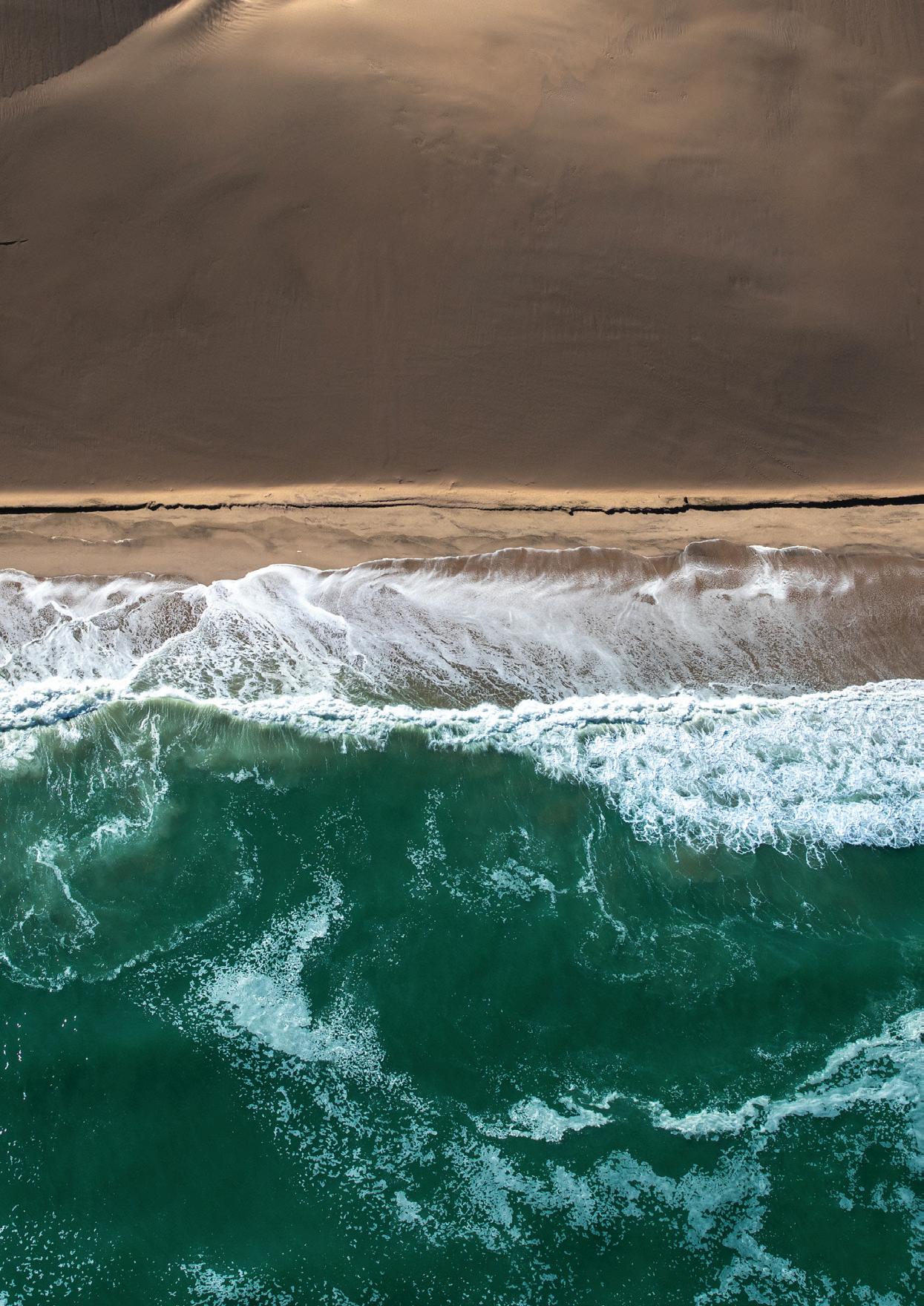
Swakopmund is much-loved by Namibians as a welcome respite from the heat in the interior. It is also popular among visitors because of its old-world charm and relaxed atmosphere. Founded in 1892 during German colonial rule, it served as the territory’s main harbour for several years.

Today this quaint town between the desert and the sea is enhanced by lush green lawns, elegant palm trees and carefully tended public gardens. It has a wide choice of hotels, guesthouses and restaurants, and several coffee shops selling traditional German cakes and pastries. The coast with its desert hinterland offers many options, both for adventure and for relaxation.
Just before reaching Swakopmund from the interior, enclosed in a small glass-fronted structure, visitors can view the Martin Luther ‘steam-ox’ imported from Germany in 1896 to transport goods between the town and other settlements. When the steam tractor became irretrievably bogged down in the sand, it was dubbed Martin Luther, because of Luther’s historic statement in 1521, “Here I stand, may God help me, I can go no further.” The venue has a museum, toilet facilities and curios for sale.
Quaint architecture from a bygone era adds to the place-outof-time atmosphere of Swakopmund. When approached from the interior, domes, turrets and towers on the skyline appear like a hazy desert mirage. Much of the distinct German colonial character has been preserved and today many of the town’s old buildings house shops, offices and other services.
Another historical landmark is the Old Iron Jetty, originally built in 1911 during the German colonial era. The jetty was frequented especially by anglers and tourists, but gradually fell into disrepair. Major repairs were done in 1983 when 17 pairs of the iron pillars were encased in concrete. In 1997 the Save-theJetty Fund was established and in 1998 the jetty was closed because it was deemed unsafe. Following a major N$ 3.7 million refurbishment in 2006, the front section was reopened to the public. In 2010 the back section was reopened and now includes an oyster bar and restaurant, with an observation deck on top.
The lagoon at Sandwich Harbour, situated 48 km south of Walvis Bay at the foot of towering ivory-coloured dunes, is a spectacular and sought-after destination. The lagoon, referred to in old texts as Sandfisch Haven, is a former bay that silted up over the years. Today especially ornithologists, photographers and nature lovers visit Sandwich.
The Sandwich area has a strange mystique, enhanced by the legend that buried somewhere in the dunes above the highwater mark is a ship with a rich cargo of ivory, gold and precious stones. This treasure has been searched for by many fortune hunters, but to date has eluded all. The lagoon is fed by fresh water seeping from an inland aquifer, and it is a sanctuary for large numbers of coastal and freshwater birds. It is also an important breeding ground for a variety of fish species. Sandwich Harbour was proclaimed a RAMSAR site in 1995. It is one of five such protected wetlands in Namibia.
Permits to visit Sandwich are obtainable from the MEFT offices in Swakopmund, Walvis Bay, Sossusvlei and Windhoek. Please note that Sandwich is accessible only by 4x4 vehicles; that in
FlyNamibia between Hosea Kutako International Airport and Cape Town, Sossusvlei, Etosha, Twyfelfontein and Swakopmund, as well as between Eros Airport in Windhoek and Ondangwa, Rundu, Katima Mulilo, Lüderitz and Oranjemund.
www.flynam.com
certain areas angling and vehicles are prohibited; that angling is not allowed from 25 January to 15 April; and that overnight camping is not allowed here.
The Walvis Bay Lagoon takes pride of place as a scenic attraction in the Walvis Bay area. The tranquil body of water, its natural beauty accentuated by thousands of flamingos gathering at the rich feeding grounds, is over 3000 years old. The lagoon has been silting up for hundreds of years, a process hastened by man’s activities. Because of its value nationally and internationally as a wetland area, it was designated as a RAMSAR site in 1995, RAMSAR being a convention on wetlands held in 1971 in Ramsar, Iran. The lagoon is regarded as the most important wetland for coastal birds in Southern Africa. Wading birds including Lesser and Greater Flamingos and White Pelicans are seen here. A pleasant walk of just over 3 km leads to Lover’s Hill, which overlooks the lagoon.
Find more Namibian travel inspiration at www.thisisnamibia.com
Follow @thisis_namibia on Facebook and Instagram for extraordinary Namibia travel stories.






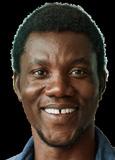




Addressing social and economic challenges faced by the youth and communities in the country, the Rob Youth Foundation, a non-profit organisation, aims to inspire and support young Namibians to become innovative thinkers, entrepreneurs and problem solvers. The organisation operates in various sectors, including health, education, agriculture, humanitarian efforts and sports. Last year, the organisation renovated the Katutura State Hospital’s maternity ward with a donation from the German Embassy to the value of N$180,000, as well as assistance from the Namibian Institute of Mining and Technology (NIMT), which provided trainees for the labour duties on the project.
The foundation’s founder and managing director, Robert Maseka, said they aim to inspire the Namibian and African youth to be inventors of new ideas for economic growth and to improve their standard of living. “We want to encourage young entrepreneurs who are making a difference in our community to work harder, thus inspiring others to do the same. We want to encourage innovation among the youth entrepreneurs, stimulating them to think outside the box,” said Maseka.
Playing their part in the maintenance of the country’s health sector infrastructure, the organisation renovated the Katutura maternity ward, and is in the process of fixing 70 broken hospital beds at the Engela State Hospital, a project which was initiated in April this year. In addition, they are also working on establishing a youth clinic in the Kavango East Region for the provision of reproductive health services in remote areas. In collaboration with Sanlam Namibia, they recently donated 70 mattresses to the Engela State Hospital’s maternity ward valued at about N$29,000 to provide a secure and comfortable environment for mothers during the labour process. “By coming together with the Rob Youth Foundation, we demonstrate the power of unity and compassion in creating a world where care flourishes and makes it a better place for all. Pregnancy and childbirth are cherished chapters in a woman’s life, and at Sanlam, we take great pride in supporting individuals during their most delicate moments,” said Lukas Tshithigona, branch manager at Sanlam Ondangwa.
Last year, the Lusu Traditional Authority availed 10 hectares of land to the Rob Youth Foundation in the Zambezi Region for a youth empowerment project. “This project is going to be one of the biggest projects for the foundation. We believe that, once implemented, it will contribute to the improvement of food security in the country. Plans are underway to make
sure that the project starts this year,” said Maseka. The office of the governor pledged to assist with a tractor for land servicing and ploughing by October/November this year, with additional support from the Ministry of Agriculture, Water and Land Reform through its regional office in the Zambezi Region.
“The foundation is a lifesaver,” said Sister Nancy Kago from the Katutura maternity ward. She commended them for tackling extremely important and sensitive issues in the country.
The principal for job attachments at NIMT said he was “honoured to represent NIMT and serve the nation”. This follows the labour assistance in the renovation of the maternity ward and the placement of a grade 12 learner from Engela Secondary School, Thomas Shimutwikeni, who also volunteered at the foundation.
“The donation is a first of its kind since I have been at the school, where those who have a heart of giving come to us with the aim of giving us hope,” said the principal of Oshiya Combined School, Mr Gothard Lindombo, after receiving uniforms for 90 needy learners at the school.
465 learners from special schools in the Khomas Region received health packages that included toiletries, sanitary and food items and according to Emma Paulus, a teacher at the School for the Visually Impaired, it makes her happy when she sees a smile on the children’s faces. Emma said the donations make a lasting impact on each and every learner. The packages will be distributed to needy learners across all regions, with 33 schools in Eenhana receiving sanitary pads.
• Rollout of sanitary pads to all the 14 regions in collaboration with the Ministry of Education, Arts and Culture.
• Educational outreach programmes on mental health and sexual reproductive health awareness campaigns for learners, teachers and out-of-school youth.
• Annual clean-up campaigns in various towns and the City of Windhoek.
The Rob Youth Foundation was established in 2019 to exclusively address the social and economic challenges faced by the youth and communities and to establish an innovative youth workforce in the country. The foundation has offices in all the 14 regions of Namibia, led by a dynamic youth workforce that runs its projects and activities.
Maggie Forcelledo Paz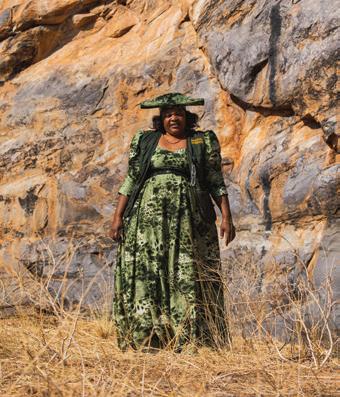
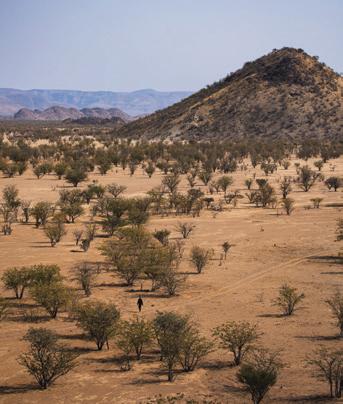


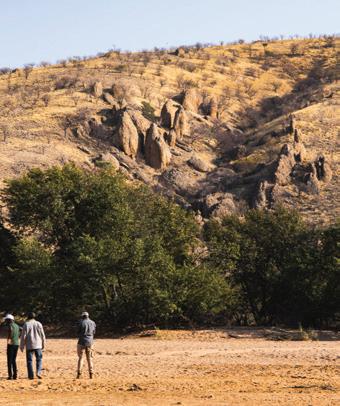

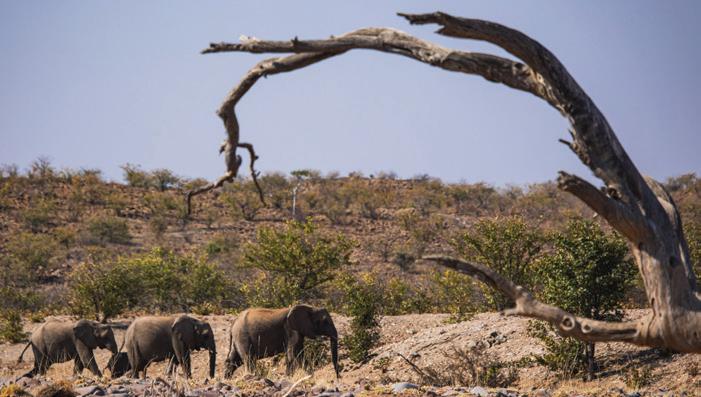
Home to a cluster of community conservancies collectively known as the Erongo-Kunene Community Conservation Area, the area offers authentic, untapped wilderness. Among these conservancies are Ehi-Rovipuka and Omatendeka, whose respective Otjiherero communities have joined forces and resources to establish Ombonde People’s Park (OPP). While at present it is a park in the making – pending the green-light gazetting of the Namibian government – OPP will soon be ready to welcome the adventurous, off-the-beaten-path traveller.
As the guests of the soon-to-be-proclaimed OPP and their spokespeople, Travel News Namibia was invited to experience this landscape, visit future lodge and camping sites, and dip our toes into the next big thing for sustainable Namibian tourism. In fact, after spending time in the field and hearing the stories and aspirations of this patriotic community, this author is delighted to report that the park, in its prime, may showcase the most dynamic bridge between tradition and innovation.
The area of Ombonde, which is Otjiherero for camelthorn tree, covers 3,599 km² of semi-arid and arid landscapes. Varying in typography and geology, the park boasts some of the most scenic savannah woodlands, river valleys, hills and plains you could imagine.
Deep riverbeds occasionally form canyons of two-storeyhigh banks laced with the root systems of mopane, ana and leadwood trees, the bulges and lines on their trunks telling us stories of ancient times. Boulders made up of mosaic stones – fist-sized ochre-coloured rocks held together by finer sediment – offer a vantage point from which the plains can be viewed with dizzying wonder. At the base of a rock gorge that would send climbers and hikers into a frenzy, we look up to evergreen trees that polka-dot the rugged escarpment, growing at abstract angles against the odds of this arid place. The people of Ombonde are bound to this sacred land, knowing that their journey to explore its possibilities has only just begun.
For these communities – as with so many others across Namibia – wealth, cultural heritage and pride have long been associated with livestock such as goats and cattle. Ombonde People’s Park (OPP) recognises the importance of safeguarding these beliefs and heritage while simultaneously introducing new ideals. It seeks to showcase the endless opportunities that can arise from tourism, wildlife protection and the appreciation of valuable natural resources.
The population of the Ehi-Rovipuka and Omatendeka conservancies amount to 4,173 people, whose representatives wish to fulfil an inclusive developmental role to uplift the socio-economic standing of their beloved people. Dubbed a “people’s park”, the fundamental vision for Ombonde is putting the power back in the people’s hands, because ultimately they understand, live, breathe and exist in this land, and they bear its best interest at heart.
OPP holds a strong team of local governance who, in collaboration with IRDNC and GIZ, have the task to draw up management plans, conduct necessary meetings to resolve issues on the ground, and prepare financial reports to remain profitable and sustainable. Once the paperwork has fallen into place, it is this team that will drive the management, maintenance and operational activities in the park, including park entry fees and local guides.
From a traveller’s perspective, the outlook of exciting new camping spots and higher-end lodges remains hopeful. OPP’s team understand the aesthetics of pitching a tent on a riverbank or under a large-top acacia, as well as the endless vistas and comforts of a hill-top lodge with all the amenities.
With unwavering determination, the communities of EhiRovipuka and Omatendeka seek to create a park where visitors can witness the harmonious coexistence of humans, wildlife and nature. One where present and future generations of the Herero and Himba people can honour tradition and share their unique homeland with visitors.
Charene Labuschagne
Namibia’s rugged northwest is one of its best kept secrets, included in only a handful of discerning traveller itineraries. Here, mopane forests meet boulders and springs, dry riverbeds and flat-top mountains, not to mention a host of free-roaming wildlife.
For these communities – as with so many others across Namibia – wealth, cultural heritage and pride have long been associated with livestock such as goats and cattle.




One of the cornerstones of journalism is the concept of fairness and impartiality – the idea that there are always at least two sides to every story. This does not mean that the journalist or media organisation is under any obligation to always present every side of every story, but it does require that they do not take sides and at least acknowledge (overtly or tacitly) that different viewpoints exist and try to understand what those are, and where they are coming from.
This is a practice that also translates from journalism to everyday life, and one that we far too often seem to forget. We assume that, just because we believe something or see things in a certain way, it is (in the words of David Foster Wallace) the “capital-T Truth”. We forget that even our family and friends in most cases do not share the exact same opinion as us on every single topic.
Of course, we do not have to agree with everyone else’s opinion, but we do at least have to acknowledge that it exists and try to understand what it is based on. Sometimes, though, rather than being willing to try to see things from someone else’s perspective, we refuse to even countenance it, claiming that it goes against our principles!

It is the ability to see things from a different point of view, to allow yourself to think about what leads another person to think the way they do or do the things they do, that Foster Wallace talks about in his 2005 commencement speech to the graduating class at Kenyon College in the United States (scan the QR code on this page to watch a truncated video adaptation titled This is Water). It offers us real freedom and allows us to break away from the default setting that says that everything we think and believe is the capital-T Truth and that we get to consciously decide what has meaning and what does not.
It is easy to understand why it is hard for many of us to see things from other people’s points of view, though. We are conditioned to believe that we are the most important person and that everything that is happening is happening to us. “It is our default setting, hard-wired into our boards at birth,” says Foster Wallace, who adds that this does not have to be the case, though. “Learning how to think really means learning how to exercise some control over how and what you think.” I would warrant that this ties in with learning how to see things from someone else’s perspective, or simply to consider why someone else thinks or behaves in the way they do. The real reason may be something totally different to what you assume. Paraphrasing Foster Wallace:
Stuck in the queue at the supermarket and getting more and more irritated after a hard day at the office, I can either choose to think about how deeply and personally unfair the situation is, and how negatively it is affecting me, or I can choose to stop and think about how everyone else in the store is just as bored and frustrated as I am, and that some of these people probably have harder, more tedious and painful lives than I do.
All of this ties in with the concept of internal vs external loci of control, whereby we choose to interpret and attribute the causes of events or behaviours either to factors outside of ourselves or our control, such as situational or environmental factors, or to factors within ourselves that we can control, such as our personality traits, abilities or emotions.

All of this is of course easier said than done – I am in no way denying that, nor am I trying to claim that I am perfect and able to consistently achieve this “zen state of mind”. It is a lot easier to blame something or someone for what has happened to us, and it takes a lot less effort to not try to see things from someone else’s point of view. However, you may find that it is a lot more rewarding to put in the effort and try, that it helps you understand other people, and that it brings you closer to them and some kind of shared human experience.
To quote Foster Wallace one last time: “The only thing that’s capital-T True is that you get to decide how you’re gonna try to see it.”
Until next month; enjoy your journey!


In response to the pressing employment challenges faced by recent graduates in Namibia, Old Mutual Namibia is taking proactive steps to ease this burden and make a meaningful impact on the nation's workforce. Recognising the need to support young talent, Old Mutual Namibia has again continued with their inspiring initiative that invites recent graduates to apply for a unique opportunity to gain market-relevant skills, positioning them for success in the job market.
Mignon du Preez, Old Mutual Namibia's Group Marketing, Public Affairs and Sustainability Executive, expressed the company's commitment to nurturing local talent, stating, "at Old Mutual Namibia, we believe in the power of investing in our future leaders. Through this initiative, we aim to equip young graduates with hands-on experience and expose them to a diverse work environment, enabling them to excel in their careers and contribute significantly to our society."
The response to the initiative was remarkable, and after a rigorous selection process Old Mutual Namibia proudly welcomed 17 exceptional graduates to its ranks, such as Paula Nantinda, Johanna Muulyao, Magdalena Nekongo, Izane Am-Gabes, Erich Nakale, Turipamwe Mbetjiha, Paulina Malakia, Anuschka Forbes, Pecky Nghaamwa, Erastus Ndhishoono, Jo-Marie Swartz, Delane Rittmann, Keannen Kolz, Bonita Salomo, Charles Naobeb, Anna-Lisa Seibes and Andreas Paulus.

To ensure the graduates thrive in the dynamic environment of Old Mutual Namibia, each has been thoughtfully placed
within various departments of the organisation. This strategic approach aims to enable them to leverage their academic knowledge while acquiring new and valuable skills, setting them up for an enriching career ahead.
Toini Muteka, Old Mutual Namibia’s Human Capital Executive, highlighted the company's sense of responsibility towards the nation's youth, saying, "Thousands of talented graduates find themselves without exposure to the working world. As a responsible corporate citizen, we are committed to bridging this gap by providing 17 graduates with hands-on experience and the chance to put their knowledge into practice. This opportunity allows them to discover their true potential and explore diverse career paths within the working world."
Muteka expressed her delight in extending this opportunity to young Namibian graduates. "As corporates, it is our responsibility to offer new graduates a glimpse of the professional work environment and contribute to the development of local talent. Today is a proud day for Old Mutual Namibia as we warmly welcome these promising young talents."
Old Mutual Namibia's commitment to empowering graduates and building a resilient workforce stands as a testament to its enduring vision of a prosperous, sustainable future for Namibia. By investing in young talent and providing them with opportunities to thrive, the company aims to create a lasting positive impact on society and contribute to the nation's growth and development.
Visit the website for more information on the Namibia Trade Network: www.namibiatradedirectory.com


Small towns in Namibia have a special allure. They often exist as a result of some or other historical irony, consolidated from one generation to the next. Be it the central melting pot of rural life as in the case of Rundu, fruitful agriculture in its surroundings like Omaruru, or for a productive long-standing harbour like in Lüderitz – each tiny town develops a distinct character.
Lüderitz is the designated destination for travellers wishing to visit the famed Kolmanskop ghost town. And while the sand-filled historic homes of Namibia’s first diamond tycoons remain an awe-inspiring sight, this small town has a whole lot more up its sleeve.

Lüderitz boasts several accommodation options, the most prominent being the Lüderitz Nest Hotel Situated on the outskirts of town, the Nest has spectacular views of the prominent Felsenkirche, as well as panoramic ocean views including a nearby oyster farm. The classic, comfortable rooms are all ensuite, with the option to book adjoining rooms if you are travelling with kids. A fantastic spread is served for breakfast. The Nest has a lovely front lawn and wooden jetty, where you are sheltered from the wind and can soak up some sun. There is also a courtyard swimming pool, and wonderful restaurant.
Krabbenhöft & Lampe makes for a unique self-catering stay in the centre of town. The building, now a national monument, was one of Lüderitz’s first trading houses. With wooden floors, high ceilings and ample character it is an authentic accommodation facility.
Kratzplatz, centrally located and also in a historic building, is a bed & breakfast. Quaint and quirky, the accommodation offers everything a guest might need, from WiFi to secure parking, while maintaining a laid-back, no frills kind of vibe.
Essenzeit is located at the Lüderitz waterfront with ample indoor and outdoor seating. Accompanied by a great view of the bay, the menu offers something for everyone, including pizza, burgers and breakfast. Enjoy an ice cold local beer and dive into the sensational seafood platter while admiring the monohulls and catamarans that bob calmly in the bay.
Diaz Coffee Shop is a great lunch spot, which serves wholesome and affordable dishes from toasted sandwiches to loaded fresh fish meals. The restaurant is divided into two sections, one with an old-school coffee shop atmosphere and the other decorated with authentic nautical paraphernalia like buoys, oyster cages and faded green rope. Try fresh oysters with Tabasco and a lemon wedge.
Portuguese Fisherman is a newer eatery, with sheltered outdoor seating and ample more inside perfectly suited to the windy, yet sunny town. The menu is limited, but this is just the place to tuck into calamari and crayfish, paired with white wine and adorable marine-inspired decor.
Barrels is the local hang-out spot favoured for its no-nonsense menu of pizza and the chef’s special, which is a three-course dinner and always something different. Buchters, as the locals are fondly called, gather there for after-work drinks at the bar or around tables fashioned from wine barrels. The place is small and dimly lit, but consider this a pro rather than a con – it oozes atmosphere.
After checking into your accommodation, I recommend
embarking on a walking tour of the town to get the lay of the land and shops and restaurants at your disposal.
A short 25-minute drive takes you to the Lüderitz peninsula where a replica of the Diaz Cross stands sentinel over a rocky hill and the rough Atlantic crashing against its base. Climb the concrete steps to the top, take in the view and snap a picture with the cross. Be warned, it gets quite windy there! Once descended from the viewpoint,a hot chocolate or tea beckons at the Skip Skop coffee shop that overlooks the quirky campsites on the peninsula. A lighthouse with classic red and white stripes completes the picture.
Local stakeholders in the tourism industry recently erected a brightly coloured LÜDERITZ sign, inviting visitors to grab a few Insta-worthy pictures. Concrete letters in technicolour hues are cast on a low wall, with the perfect backdrop of the calm waters of the bay and harbour. Not only is this a great place to mark your visit to the Bucht, but locals have adopted it as their designated sunset spot. Grab a few refreshing drinks from a shop in town and sign off a day in Lüderitz while gazing across the ocean.

Last, but certainly not least: Kolmanskop. The appeal of Lüderitz’s rich history is tethered to the rise and fall of this settlement, which sprung up after the first diamond was discovered in the vicinity in 1908 by railway worker Zacharia Lewala. Kolmanskop was created out of the dust. Wealthy residents enjoyed amenities like a ballroom, power station, an ice factory and a hospital which boasted the first X-ray equipment in the southern hemisphere. The now eerily empty and dune-filled buildings can be explored at your leisure, or with a guide.
My experience in Lüderitz was truly surreal. The trip was incredibly exciting, not only because it was my first journey with FlyNamibia, but also because it was my first flight EVER! The views over the Namib, right before we touched down in Lüderitz, were breathtaking. During our two-day stay I also gained a wealth of knowledge about the town's rich history.
Lüderitz boasts beautiful architecture and the warmest, friendliest people. What stands out to me the most about the town is its unique tranquillity. It is a thriving harbour and an economically promising town, yet it feels like the pace of life there is slower and more intentional.
When it comes to meals, my highlight has to be the fantastic breakfast at the Lüderitz Nest Hotel. Furthermore, the restaurants in Lüderitz serve up deliciously fresh seafood, and they have all mastered the art of the french fry.
For those considering Lüderitz as a tourist destination, I highly recommend it! Its history is complemented by pictureperfect tourist attractions like Kolmanskop, Diaz Point and the Felsenkirche. Not to mention the town's imminent economic growth as a result of off-shore exploration. FlyNamibia effortlessly connects you to the jewel of Namibia’s coast with weekday flights to Lüderitz.
FlyNamibia between Hosea Kutako International Airport and Cape Town, Sossusvlei, Etosha, Twyfelfontein and Swakopmund, as well as between Eros Airport in Windhoek and Ondangwa, Rundu, Katima Mulilo, Lüderitz and Oranjemund.
www.flynam.com
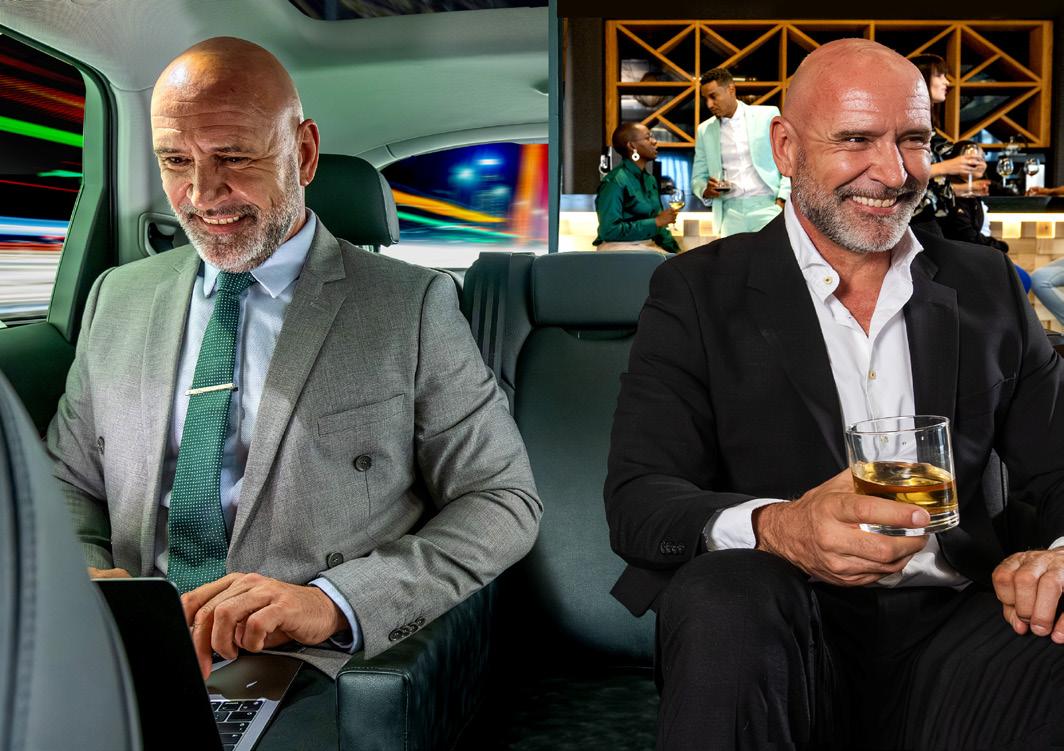
AviaDev Africa, the leading platform dedicated to enhancing connectivity to, from, and within the African continent, is delighted to announce that the event will be held in the beautiful city of Windhoek, Namibia in June 2024, hosted by the Namibia Airports Company. This annual forum will bring together influential stakeholders, including airlines, airports, tourism boards, government officials and industry experts to foster collaboration, forge strategic partnerships, and explore opportunities that will deliver new air routes across Africa.

AviaDev Africa is renowned for its unique ability to create a conducive environment for aviation professionals to network, exchange ideas, and collaborate on innovative strategies that drive sustainable air connectivity. By choosing Windhoek as the host city for the event in 2024, AviaDev aims to highlight Namibia’s growing significance as a destination for the aviation industry and its commitment to bolstering regional connectivity.
For more information about AviaDev Africa and to stay updated on event details, please visit www.aviationdevelop.com
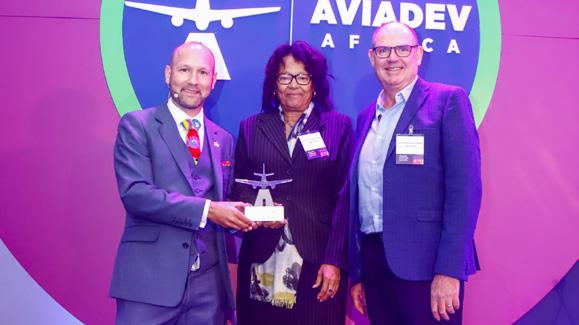
In the pursuit of athletic excellence, athletes worldwide share a common ambition: achieving their goals through rigorous training and preparation. The significance of physical strength, agility, speed and endurance is well understood, but a crucial aspect that often flies under the radar is cognitive and visual training.
With over 80% of the information in sports being visually acquired, the realm of sports vision has emerged as a game-changer. It encompasses not only what we see but also how we process that visual information and translate it into action. The oft-neglected cog in the training wheel –cognitive and visual training – has the power to reshape an athlete’s journey.
At the heart of sports vision training is the idea that training is not limited to the eyes alone. It is a holistic approach that bridges the cognitive and motor systems, harmonising them for optimal performance. The capacity to swiftly perceive, process and make precise decisions during the high-pressure moments of sports sets exceptional athletes apart from their peers.
A fascinating facet of sports vision training revolves around refining an athlete’s visual acumen. The ability to track fastmoving objects while maintaining unwavering focus is a skill that can be honed. This is where practices like EyeXcel, Namibia’s first sports vision training centre, step in. They initiate the journey with a comprehensive sports vision evaluation that establishes an athlete’s baseline capabilities. Using this foundation, a personalised training regimen is meticulously crafted, tailored to the athlete’s unique strengths and potential areas of growth. It is not just about vague exercises; it is about measurable progress. The baseline evaluation gauges ten distinct cognitive and motor skills, aligning an athlete’s performance with peers in the same sport and age group.
EyeXcel embodies collaboration. Optometrists tackle the visual system, while coaches and athletes contribute their specialised sports expertise. By marrying state-of-theart technology with athletic insight, EyeXcel creates an environment where holistic development thrives.


However, sports vision training transcends the visual. It is a nuanced process that fine-tunes the brain’s ability to process visual information efficiently. This translates into enhanced decision-making capabilities, reducing the risk of injuries. Improved tracking of fast-moving targets and unwavering focus empowers athletes to make crucial split-second judgments, which can turn the tide on the field or court.
The testimonials of athletes who have embraced sports vision training echo its transformative impact. As sessions progress, they share a common sentiment: the world seems to slow down. Time expands, enabling them to make pivotal decisions. Their spatial awareness becomes keener, deepening their comprehension of the game’s dynamics. Most strikingly, athletes consistently report heightened performance and a heightened sense of accomplishment.
Participating in this journey is both exhilarating and humbling. EyeXcel takes immense pride in being Namibia’s inaugural sports vision enhancement practice. By importing cuttingedge technology into the country’s sports landscape, EyeXcel equips athletes with tools that break boundaries.

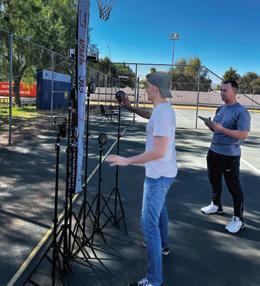
At the core of EyeXcel’s ethos lies an unwavering passion for nurturing athletes’ visual skills and propelling them towards their peak. Their mission is to guide athletes towards unleashing their untapped potential, enabling them to rise to new heights. In the intricate process of training, the potency of vision emerges as the unseen force that redefines the path to sporting greatness.
Elzanne McCullochNamibia’s currency, the Namibian dollar, is pegged to the South African rand at a one-to-one ratio. This arrangement, in place since Namibia’s independence, rarely garners attention – until the rand weakens. Each time it does, Namibians start to wonder: Is this peg a blessing or a curse?
In this article, we unpack the pros and cons of the enduring financial ties between the two nations and the implications of the currency peg on Namibian financial stability.

When Namibia gained independence in 1990, it became a de facto member of the Common Monetary Area (CMA), although formal membership only commenced in 1992. Instead of introducing a completely new currency, Namibia made the strategic choice to peg its currency to the rand at a one-to-one ratio under the rules of the CMA. This decision was not arbitrary. Historically, Namibia’s economy was deeply intertwined with that of South Africa. As such, maintaining this monetary link was seen as a practical imperative,
ensuring economic stability and continuity during a period of significant political transition in both countries.
The currency peg not only simplified trade and financial interactions between the two nations but also provided Namibia with a safety net of sorts, anchoring its young economy to the more established South African financial system. But while it certainly was the right decision in the past, the question of whether the currency peg is still a valuable tool for Namibian financial stability in the present, is one that is more and more frequently being raised. This despite the Bank of Namibia’s unequivocal stance that it remains beneficial.
Questions surrounding the peg are undoubtedly due to the very visible fluctuations in the rand and the associated inflationary pressures it brings. Fuel prices go up, and the rand is blamed. The rand depreciates due to the latest political drama in South Africa, and Namibians question why we are still tied at the hip to a country that seems politically extremely volatile.
Firstly, there are some very real negative consequences to a currency peg. The most notable one is that Namibia, to a large extent, relinquishes control over its own monetary policy. In the case of Namibia, by pegging the Namibian dollar to the rand, it inherently aligns its monetary policy with that of South Africa. If the South African Reserve Bank (SARB) decides to adjust interest rates to address South African domestic economic concerns, Namibia, due to the peg, will likely have to follow suit. While this is not a problem when the economic performance of the two countries is moving in the same direction, it does pose challenges when the economic performance between the two countries diverges. Namibia is less likely to be able to implement the ideal monetary policy during such deviations.


Furthermore, the currency peg means that the value of the Namibian dollar is dependent on South Africa’s economic performance and political regime. The Namibian dollar appreciates and depreciates with the value of the rand. Thus, any cost-push inflation due to the depreciation of the rand is passed along to Namibian consumers despite domestic economic performance. This is generally what concerns Namibian consumers and media the most. The rising cost of living in Namibia is often blamed on the volatile South African political climate. Rand depreciation undoubtedly has an impact on the cost of living in Namibia, as much of what we consume is imported.
Then why is the Bank of Namibia so steadfast in their conviction that the currency peg is beneficial to Namibia? This is a question that the central bank has answered many times in the past, but allow us to reiterate the benefits of the currency peg.
The South African economy, being much larger and more diversified than Namibia’s, offers a foundation of stability, most importantly through reasonably stable inflation. Yes, the rand can be a volatile currency, but the fundamentals of the larger South African economy mean that the rand tends to depreciate at a steady rate over time. Currency stability improves the predictability and price transparency of trade, because a stable currency allows businesses to predict costs and revenues with greater accuracy. This is especially true for contracts that are negotiated months in advance. Stable currencies mean that the price of goods and services remains relatively consistent. Thus, price stability and predictability tend to result in lower inflation.
This is particularly evident in some sectors where it matters a lot. Namibia is far from self-sufficient when it comes to maize production, for instance. As a result, Namibia is forced to resort to trading with other countries that produce excess maize. The quantity of maize that Namibia requires is quite small by global standards, and buying maize from the international market in Namibian dollars is not possible. Here Namibia is able to rely on the large South African economy and its globally recognised currency to secure maize at relatively steady prices. Therefore, increases in the cost of maize are lower and more predictable than in most Southern African countries. This lower, more stable inflation is prevalent in most of the goods and services traded with South Africa, or in its currency.
Transaction costs are another benefit. The currency peg means that transaction costs when trading with South Africa are minimal, or even non-existent. And as roughly 60% of Namibian imports come through South Africa, this is a major benefit to Namibian consumers. Not only are the direct costs such as foreign exchange fees minimised, but the indirect costs of larger government departments dealing with things such as customs and excise are also much reduced.
Travel and tourism also benefit from the currency peg as the absence of exchange rate risk means that everything, from flight tickets to the cost of accommodation, is much more predictable. Tourists entering Namibia do not need to incur foreign exchange costs when transacting with rands in Namibia and the supply of rands in global markets is sufficient to ensure a relatively frictionless exchange from foreign currency into rand.
Even this brief evaluation of the benefits of the currency peg makes it clear why the Bank of Namibia is reluctant to entertain calls to abolish the arrangement. Yes, challenges do arise from this monetary alignment, most notably the loss of complete monetary autonomy. However, when one assesses the vast panorama of benefits – enhanced trade relations and simplified financial operations, not to mention the appeal to foreign investors and protection from speculative volatilities – it becomes clear that the currency peg has been, and will continue to be, a key financial stability tool enabling, rather than curtailing, economic activity.
IJG believes in tailoring their services to a client’s personal and business needs. For more information, visit www.ijg.net



Eric van Zyl – Managing Director Designate, IJG Securities
Namibia's currency, the Namibian dollar, is pegged to the South African rand at a one-to-one ratio. This arrangement raises questions about its impact on stability and financial ties between the nations.
In early August, a desolate stretch of beach just south of Walvis Bay, usually adorned with a few fishing rods and dedicated fishermen, transformed into a bustling scene of 4x4 vehicles, cameras and enthusiastic surfers. Skeleton Bay, or as it is colloquially referred to, Donkey Bay, surged with intense activity as it delivered waves of unprecedented quality. Local surfers believe these were possibly the best conditions the bay has ever witnessed.
With the ideal conditions in place for this uniquely angled bay to catch swells from winter storms, some of the world’s most renowned surfers promptly booked plane tickets for the chance to ride what is acclaimed as the longest left-hand wave globally.

Among the professional surfers gracing our shores, the legendary eleven-time world champion, Kelly Slater, stood out. Slater’s visit was a swift one, as he was en route to Tahiti for what might mark his final professional contest
at Teahupo’o. Having declared his retirement from professional surfing earlier in the year, Slater mentioned that he demolished three surfboards in a single session, with one of them ending up two and a half kilometres down the beach.
Even the well-known World Surf League commentator, Strider Wasilewski, embarked on an extensive sixty-hour journey from Los Angeles to partake in this experience. He shared his thoughts on social media, writing, “Why? This is why… because you only live once, because you love it so much it’s all you think about, that’s why. 60 hrs of travel round trip, the craziest, longest, most barrelling wave ever and a very satisfied, adrenaline-filled soul! The freedom of the desert and the beat down of my body, the greatest equaliser ever, thank you surfing.”
Koa Smith, famous for his 27-second barrel GoPro footage of Skeleton Bay in 2014, was also in the country, alongside fellow surfers Benji Brand, Brett Barley and Jamie O’Brien. In
an online video, Smith noted that this was the most crowded he had ever seen Skeleton Bay.
However, perhaps the most awe-inspiring feat was accomplished by Nathan Florence during an endurance session. Over an incredible span of 11 hours and 50 minutes, he covered a staggering 51 kilometres through a combination of paddling, surfing and walking back up the beach to re-enter the water. Notably, this distance does not even account for the energy expended while paddling against the current and navigating countless waves.
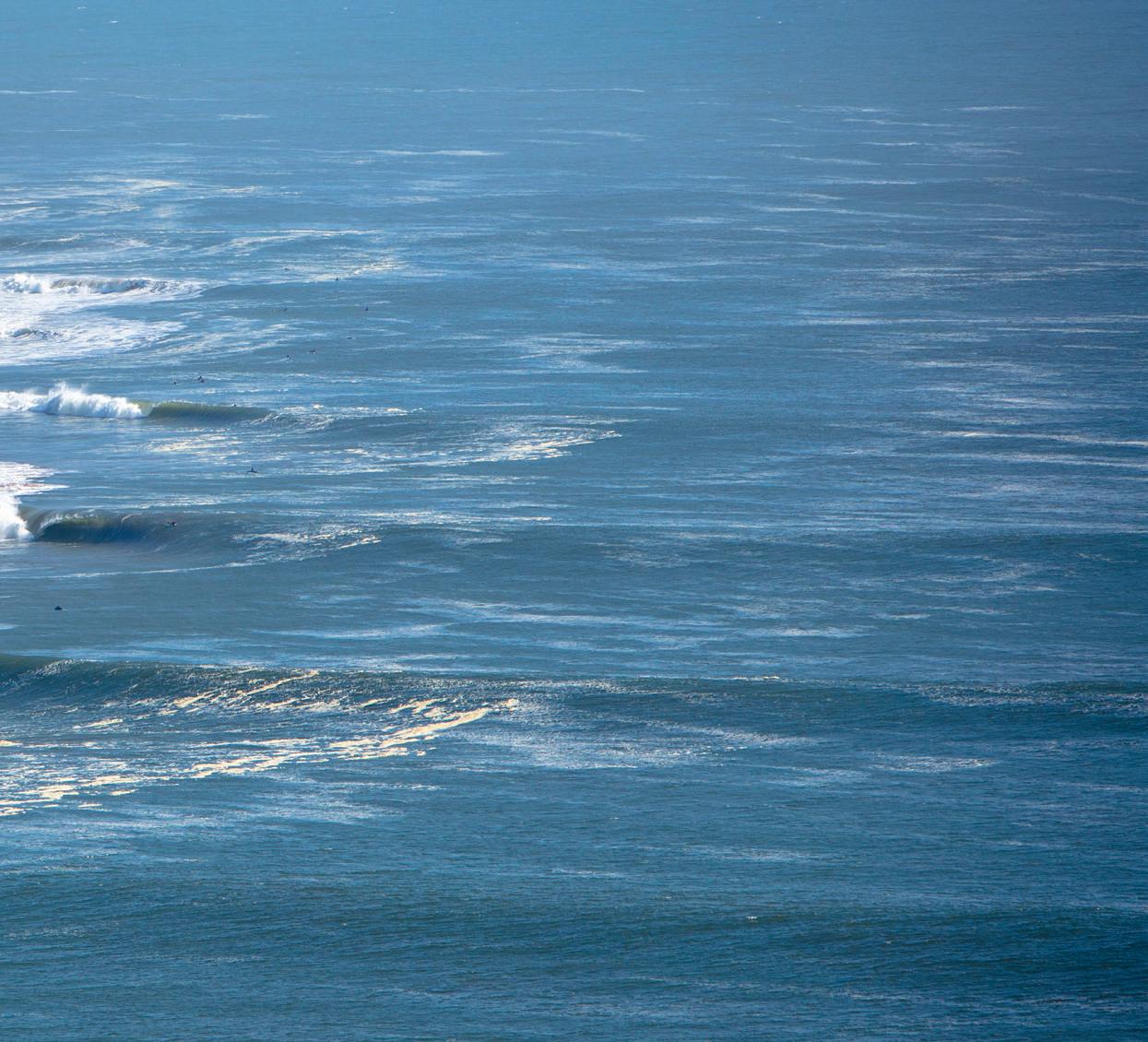
Locals estimated the wave heights to be around 8 to 12 feet, while international surfers gauged them to reach between 12 to 15 feet. Irrespective of the specifics, the prevailing conditions this year created an optimal environment for the legendary wave, known to come to life only a few times annually.
As FlyNamibia launches its new route from Cape Town to Walvis Bay this month, there are now no excuses to miss out on riding the world’s finest wave the next time it graces us. Keep a watchful eye on those weather apps and ensure your surfboard remains waxed and ready to shred.
Skeleton Bay's magical transformation welcomed surfers to ride waves of unparalleled beauty and exceptional quality, creating an unforgettable chapter in surfing history.Alan van Gysen


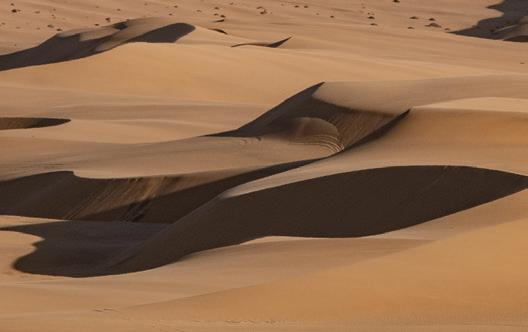
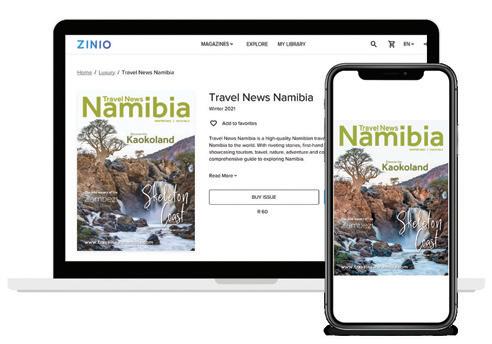


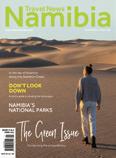




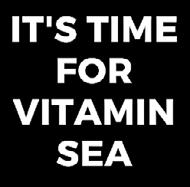
This month in history:
2 September 31 BC
Mark Antony and Cleopatra defeated at the Battle of Actium. It took place in the Ionian Sea near Actium, Greece and was the climax of a decade-long rivalry between Augustus Octavian and Antony.
3 September 1939
Declaration of war by Britain and France on Germany signalling the beginning of the Second World War.
6 September 1959
Mattel Toy Corporation sold the first Barbie doll. Considered revolutionary as the first adult doll on offer at a time when baby dolls - that allowed girls to pretend to be mothersdominated the market.
7 September 1986
Desmond Tutu became archbishop of Cape Town. He was known for his work as an anti-apartheid and human rights activist.
19 September 1970
The first Glastonbury music festival took place over two days. The 1,500 people that attended paid £1 each for their ticket, which included fresh milk from Worthy Farm, where the festival was held.
World Suicide Prevention Day

24 September 1869
Black Friday: an attempted fraud caused a severe fall in the price of gold and a US financial crisis.

11 September 2001
Islamic extremists hijacked four aeroplanes in a coordinated suicide terrorist attack that flew into the World Trade Centre, New York. Nearly 3 000 people died in the events of 9/11.

27 September 1822
Announcement by JeanFrancois Champollion, founder of Egyptology, that he had deciphered Egyptian hieroglyphs using the Rosetta Stone.
11 September
9/11 Remembrance Day

22 September
World Rhino Day

The name September comes from the septem, meaning “seven” in Latin. It was the seventh month in the early Roman Calendar.




27 September
International World Tourism Day

EASY MEDIUM 8 1 2 9 4 5 6 7 3 4 3 9 6 2 7 1 5 8 7 5 6 8 3 1 9 2 4 3 2 7 4 1 6 5 8 9 6 9 8 7 5 2 4 3 1 5 4 1 3 9 8 2 6 7 1 7 4 5 6 3 8 9 2 2 8 5 1 7 9 3 4 6 9 6 3 2 8 4 7 1 5 4 5 8 2 6 3 9 7 1 9 7 6 1 5 4 2 3 8 1 3 2 9 8 7 4 5 6 5 2 1 6 7 8 3 9 4 7 8 9 4 3 2 1 6 5 3 6 4 5 9 1 7 8 2 2 9 7 8 1 5 6 4 3 8 1 3 7 4 6 5 2 9 6 4 5 3 2 9 8 1 7 1 9 9 1 5 7 3 1 2 4 3 7 4 5 8 6 9 8 4 3 1 4 1 8 2 7 1 7 5 6 2 8 5 3 4 1 5 8 2 3 6 1 5 8 6 2 9 4 7 5 3 6 8 2 1 4 6 5 3 9 8 1
EASY MEDIUM

